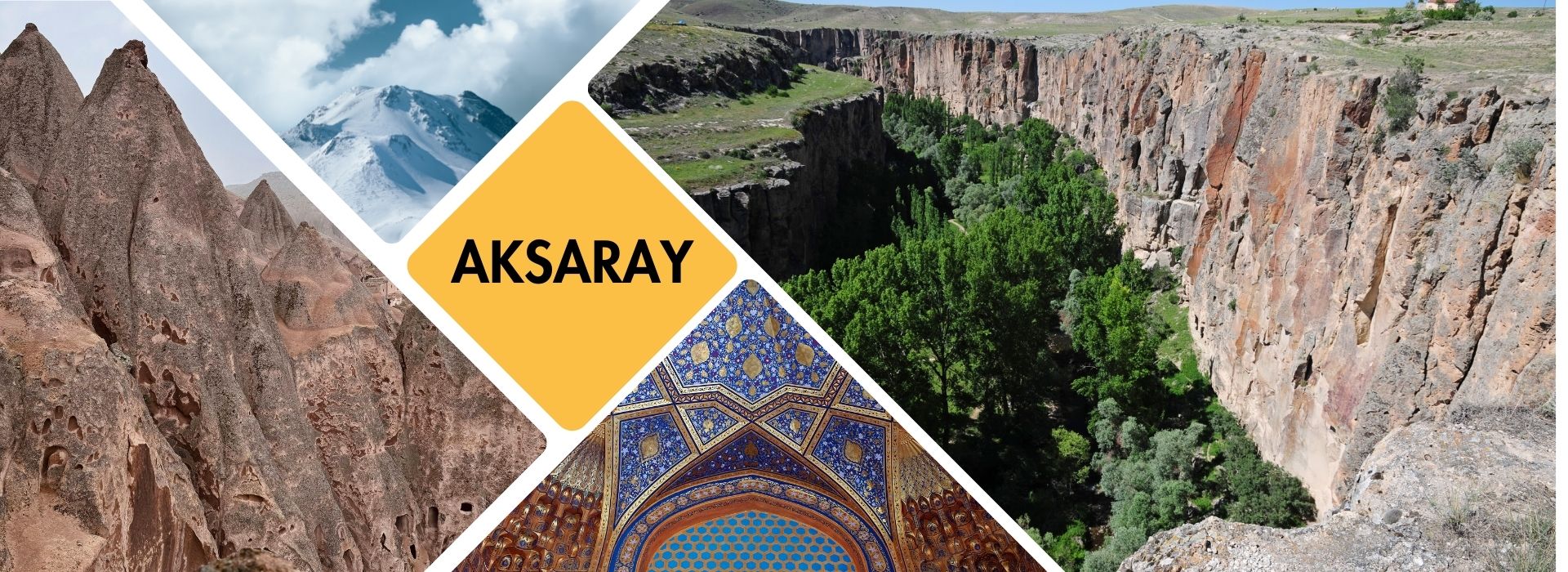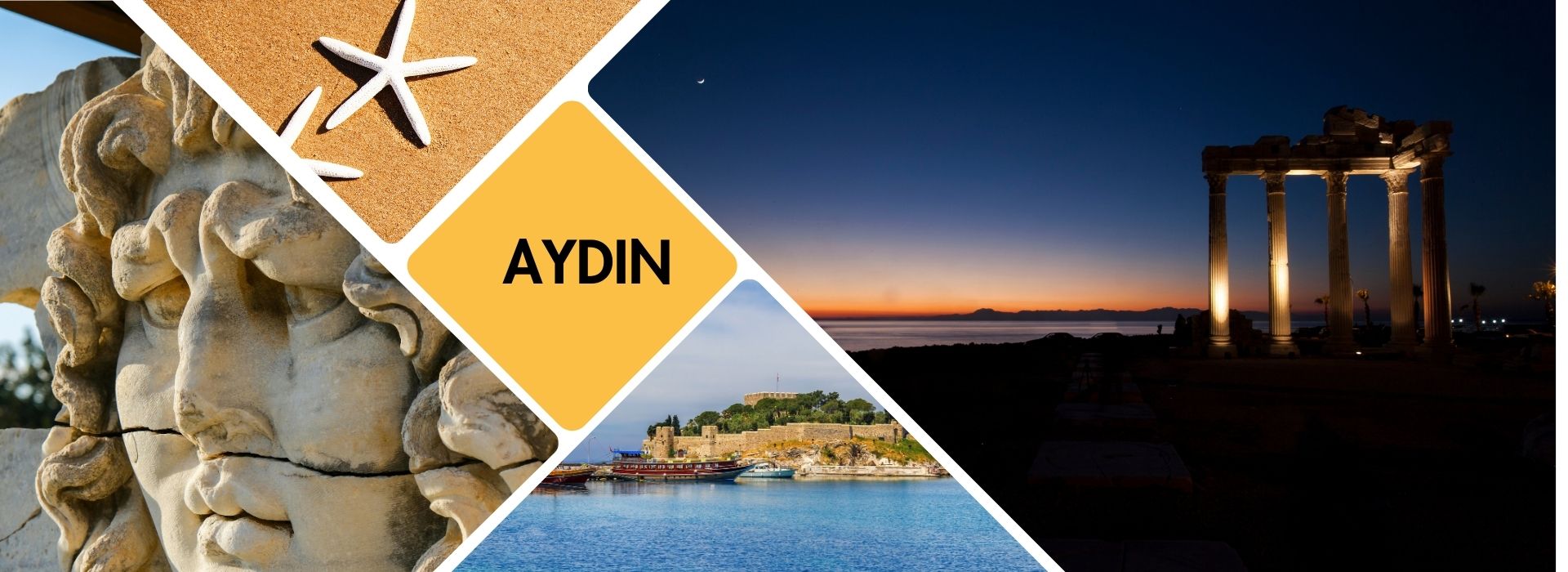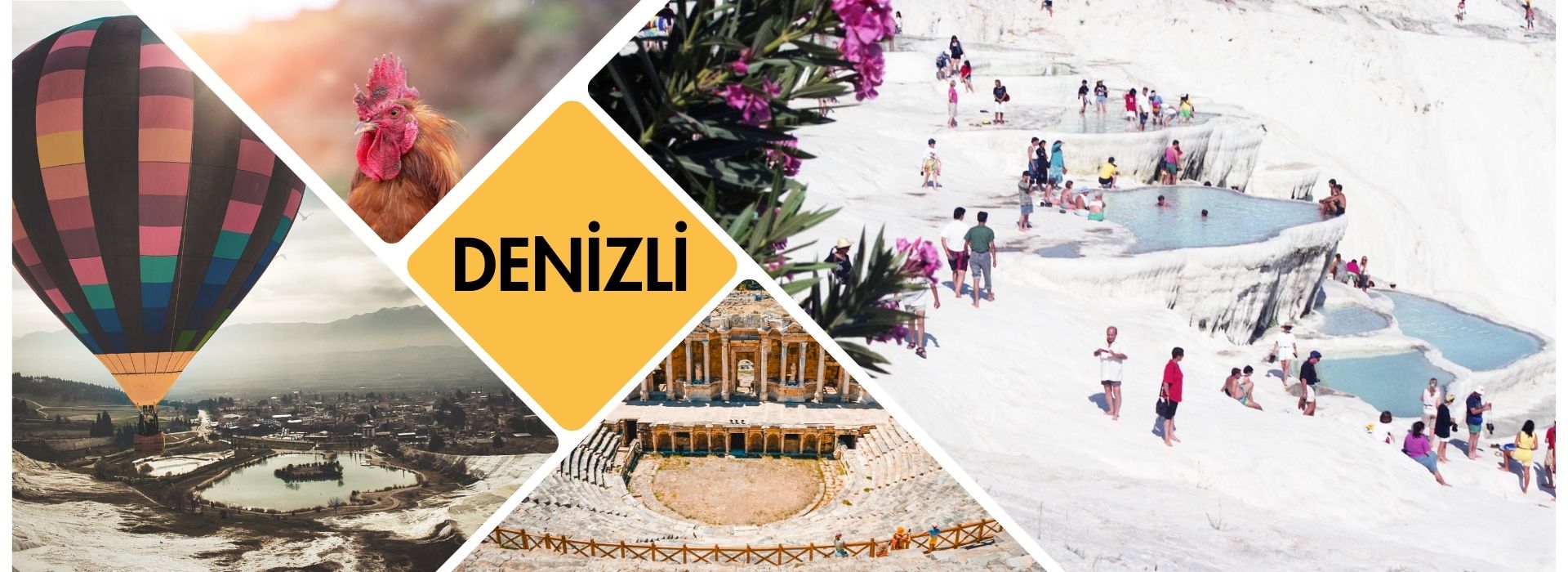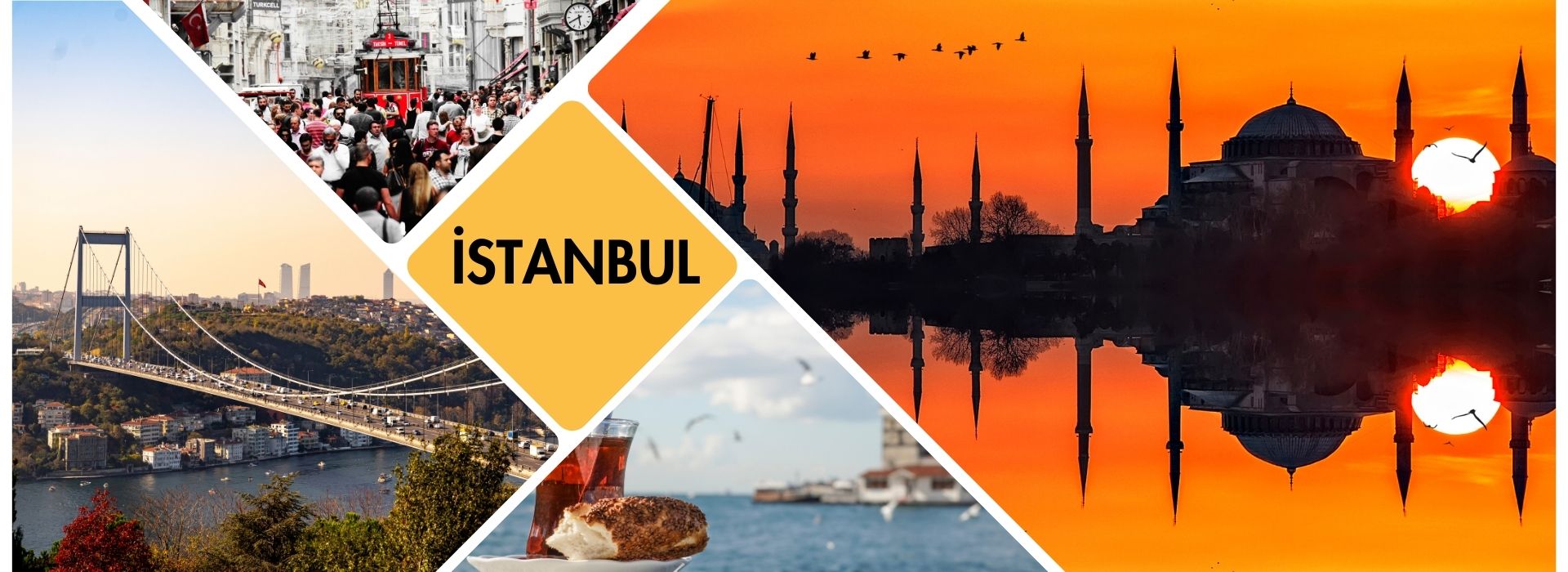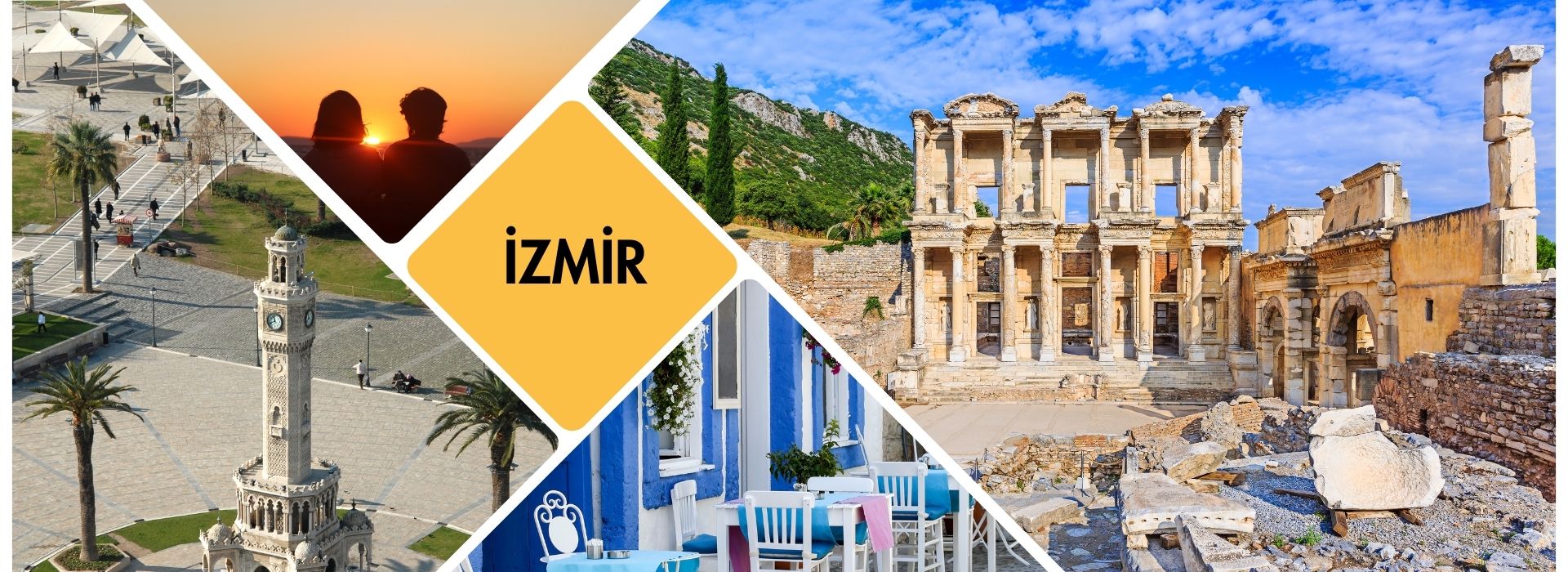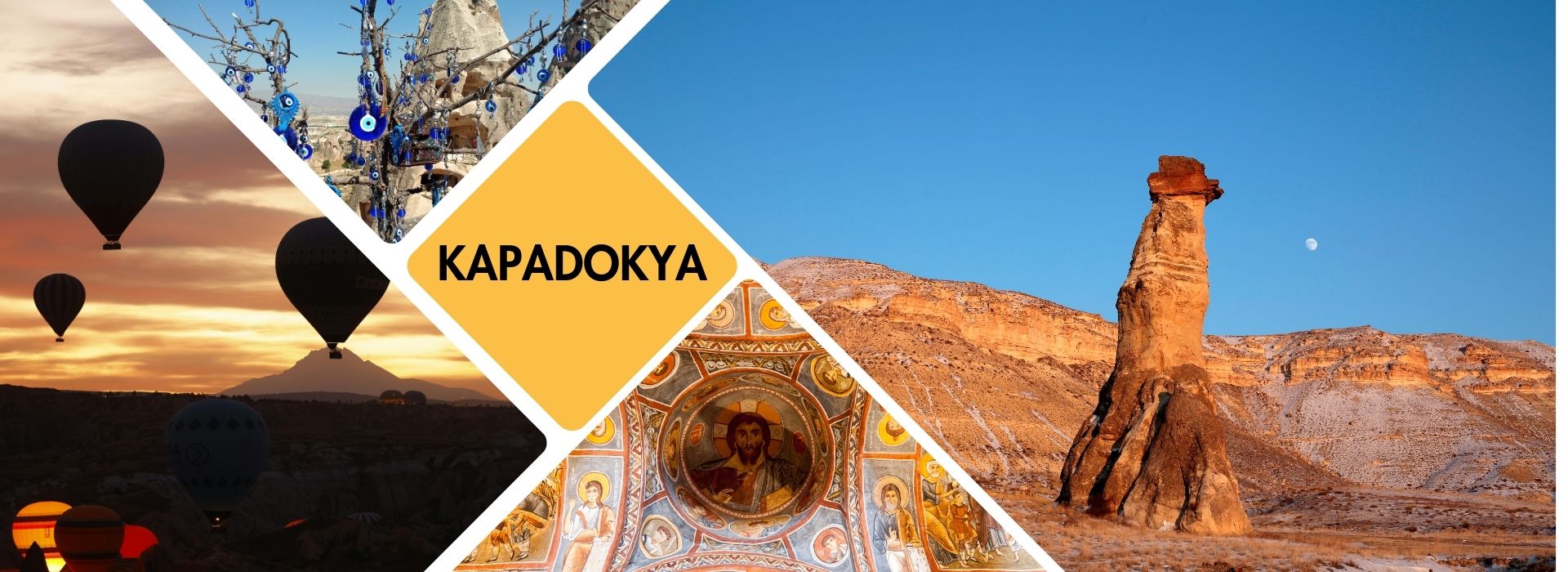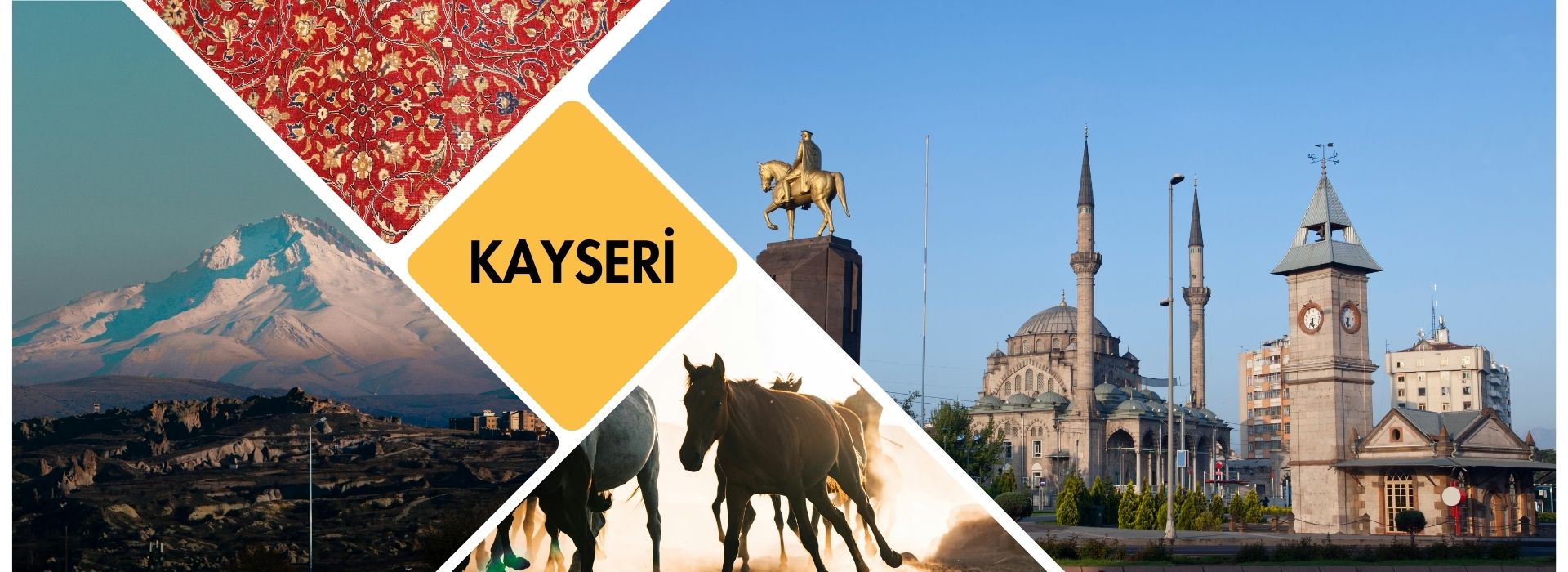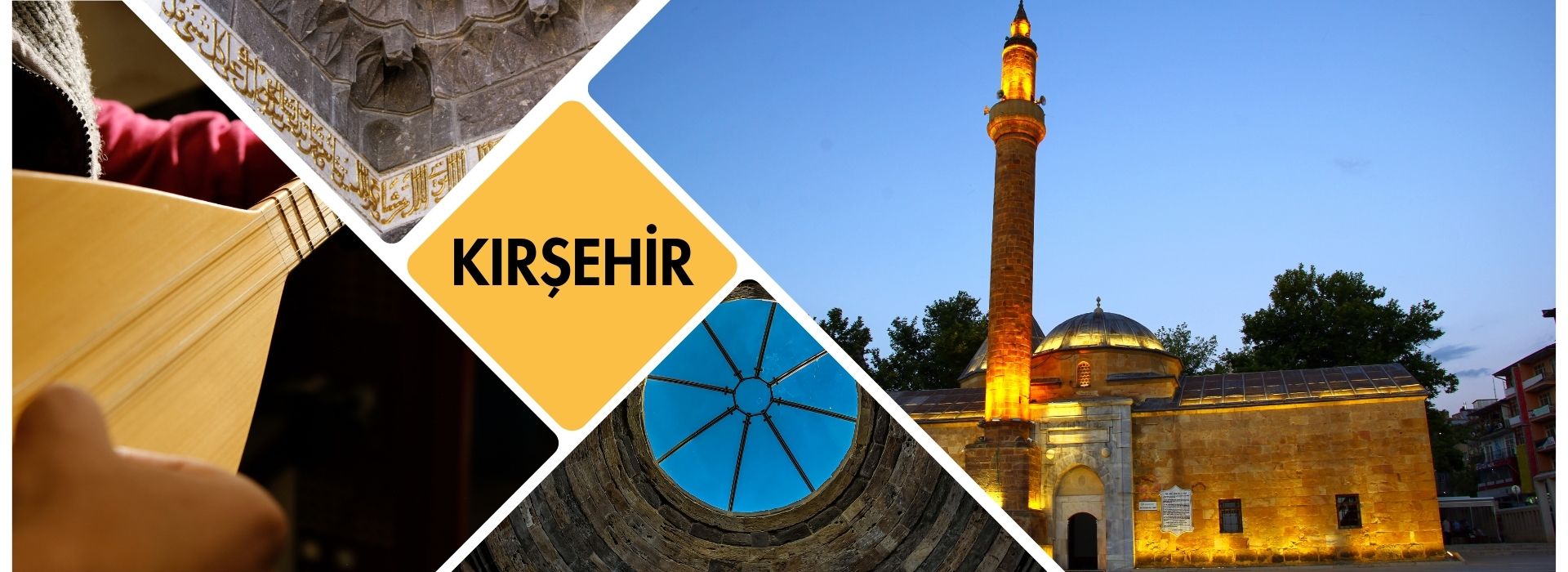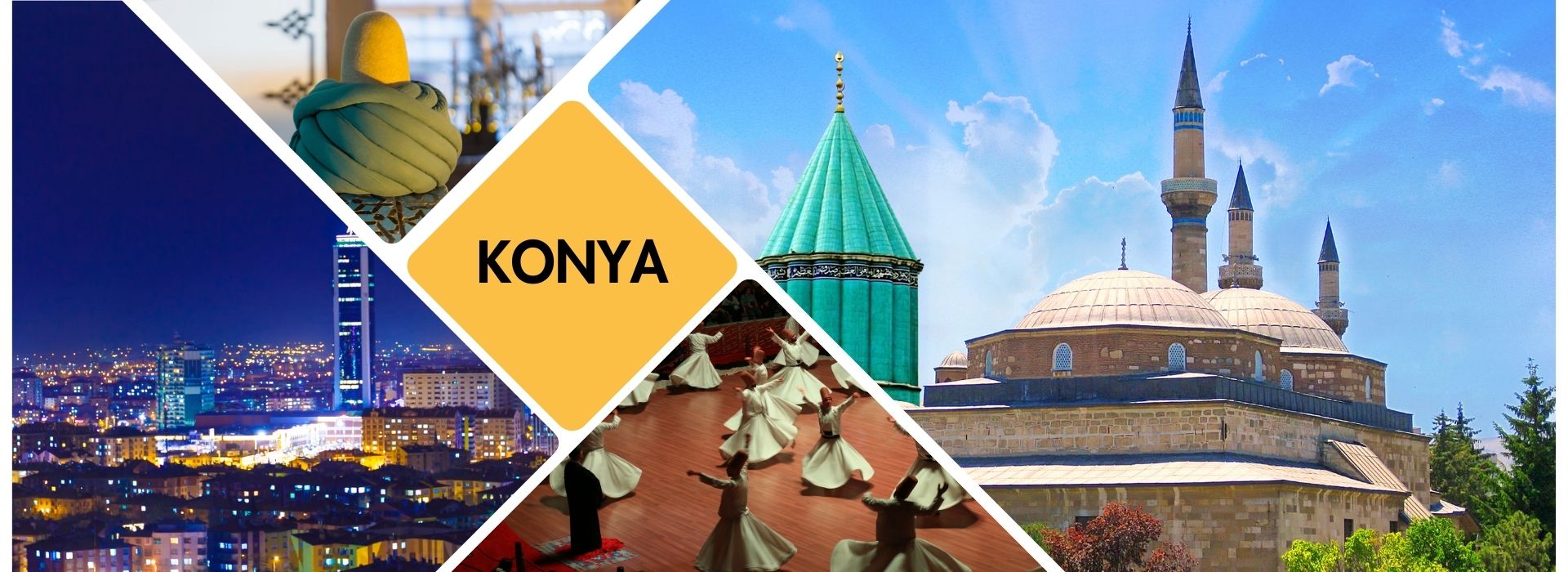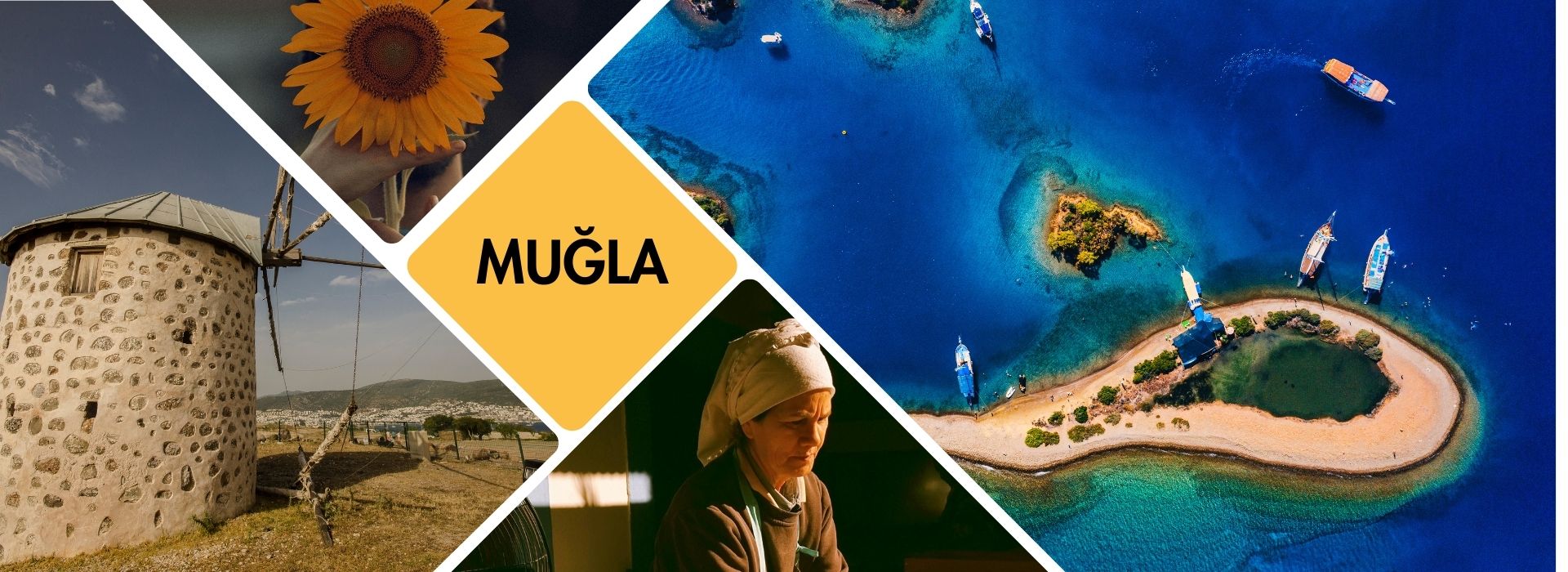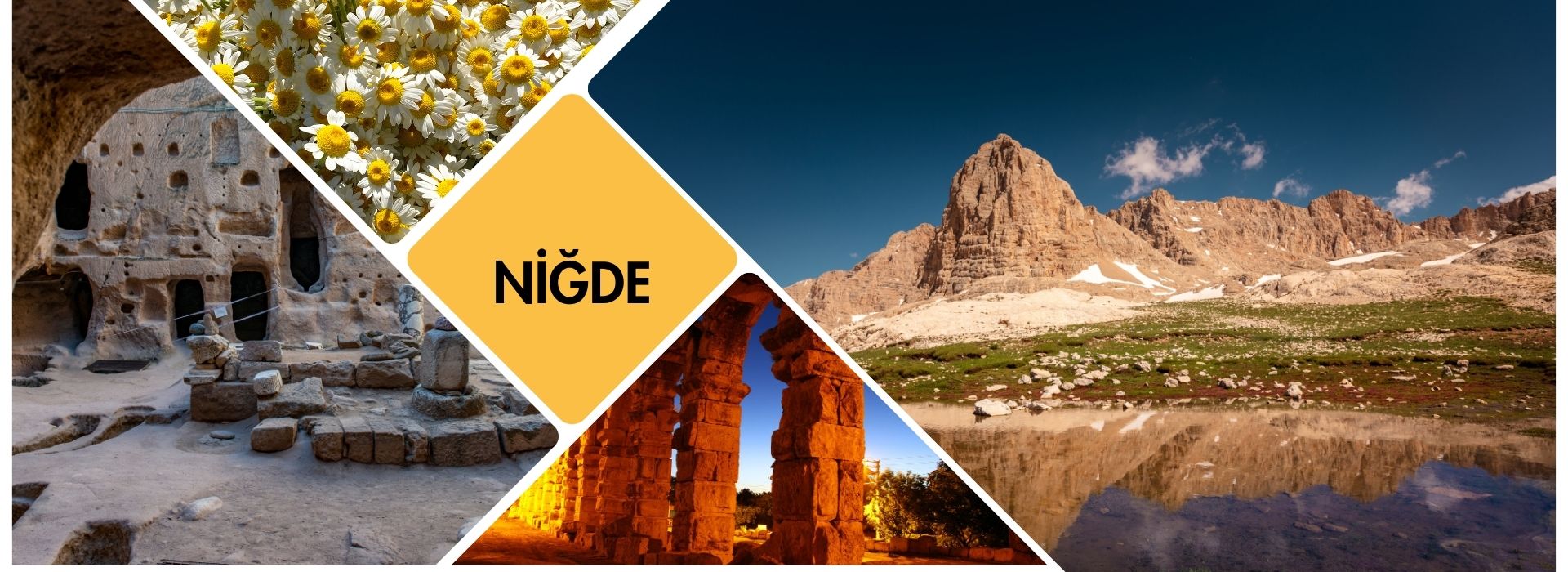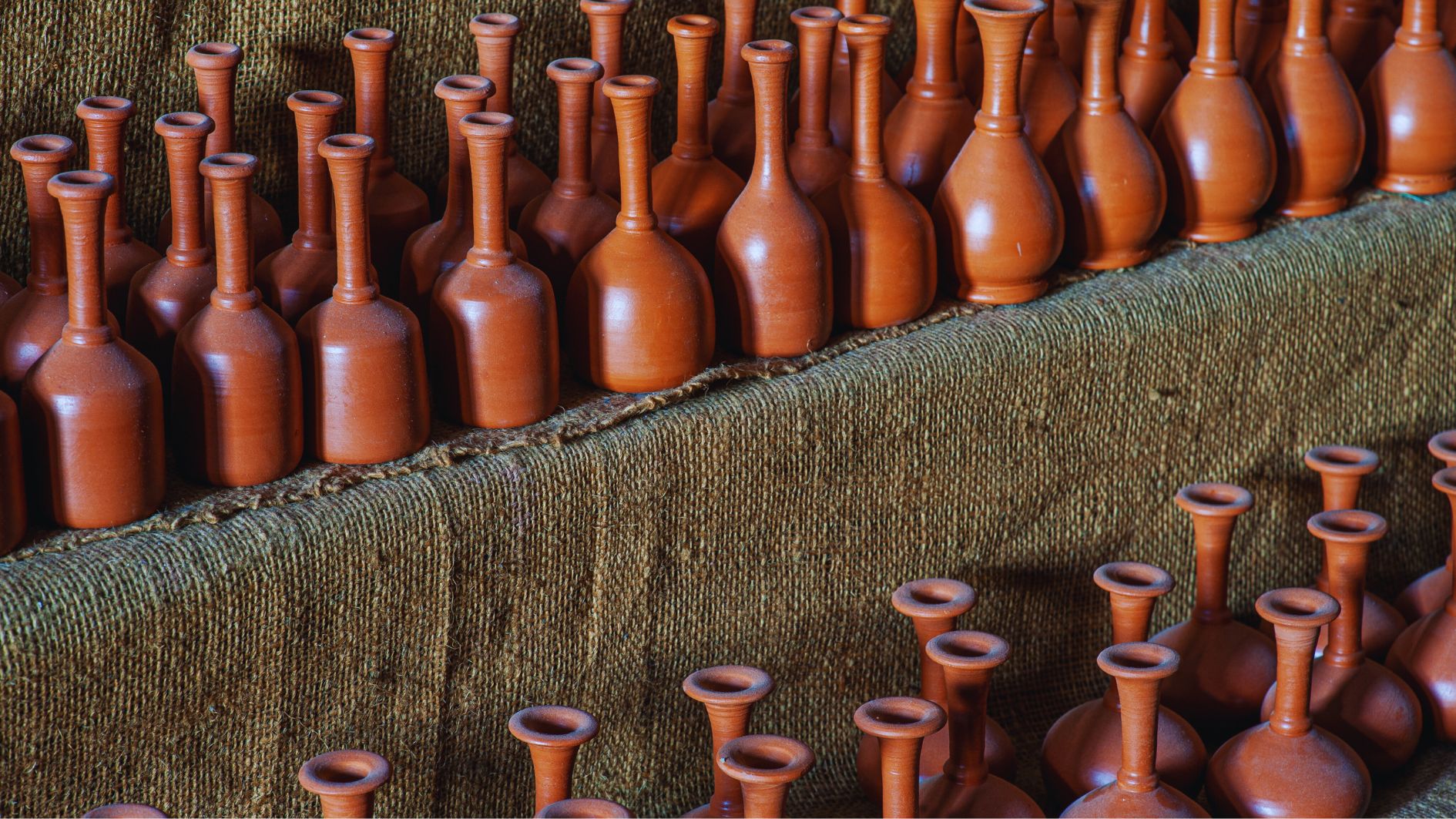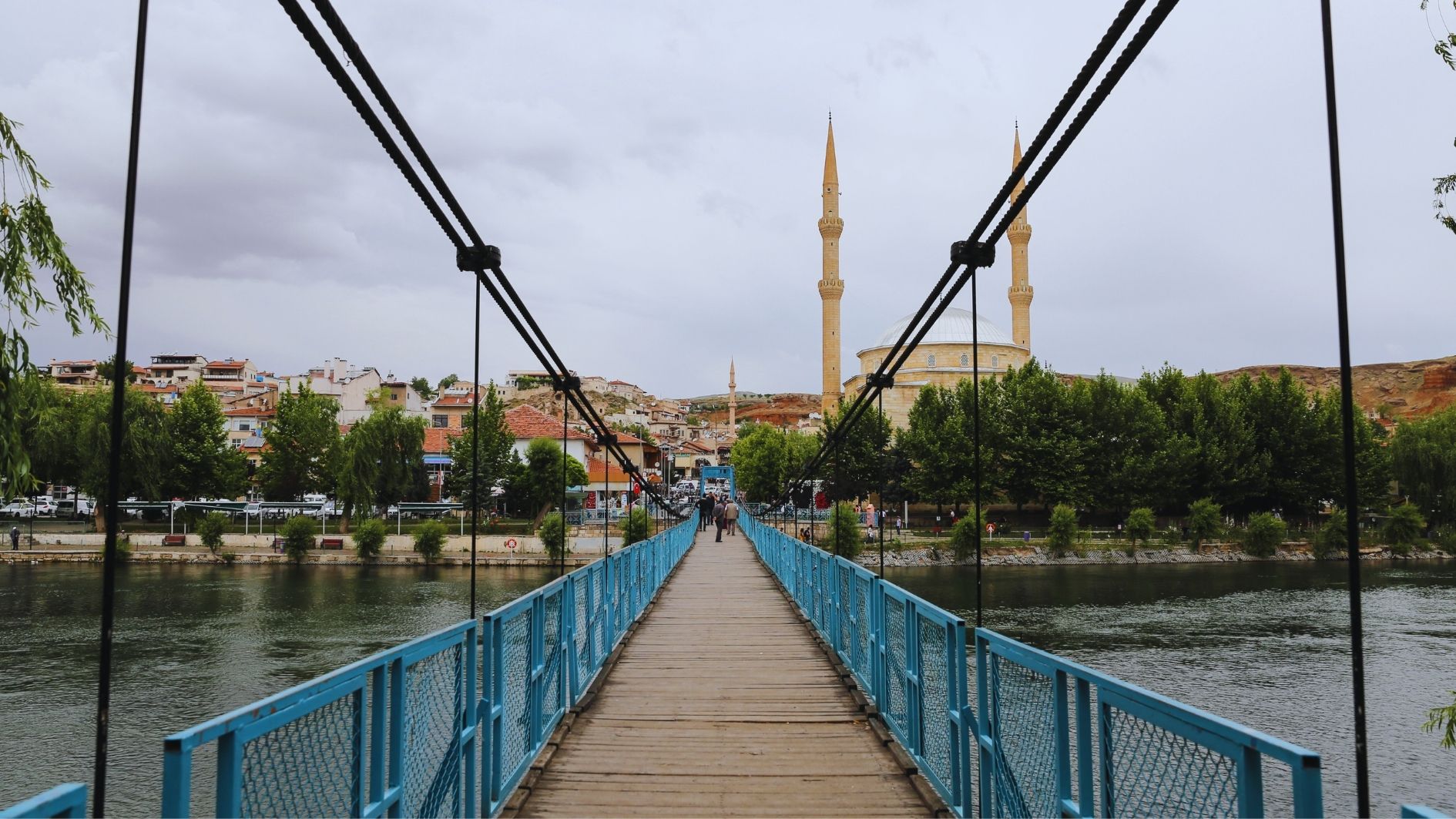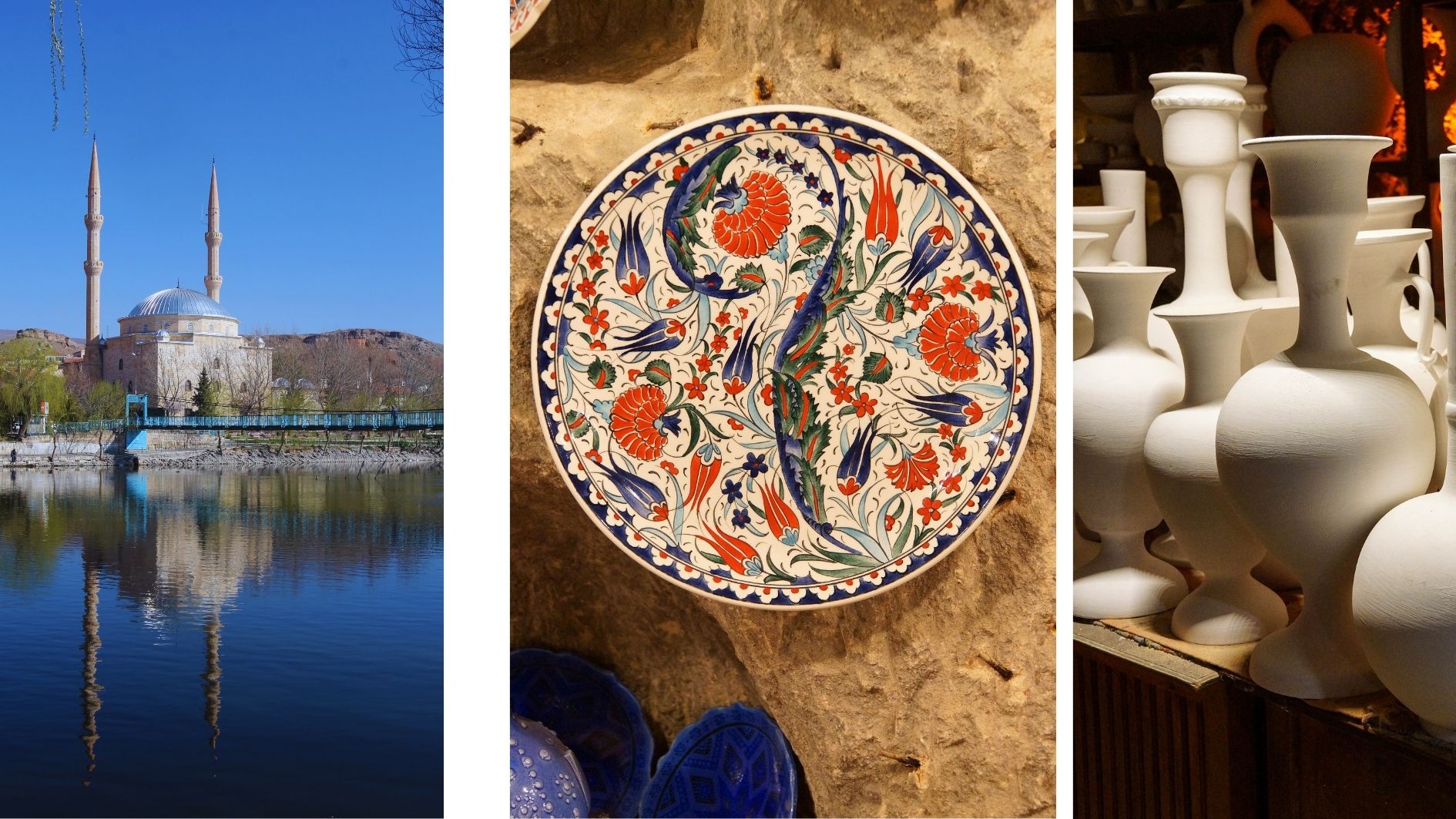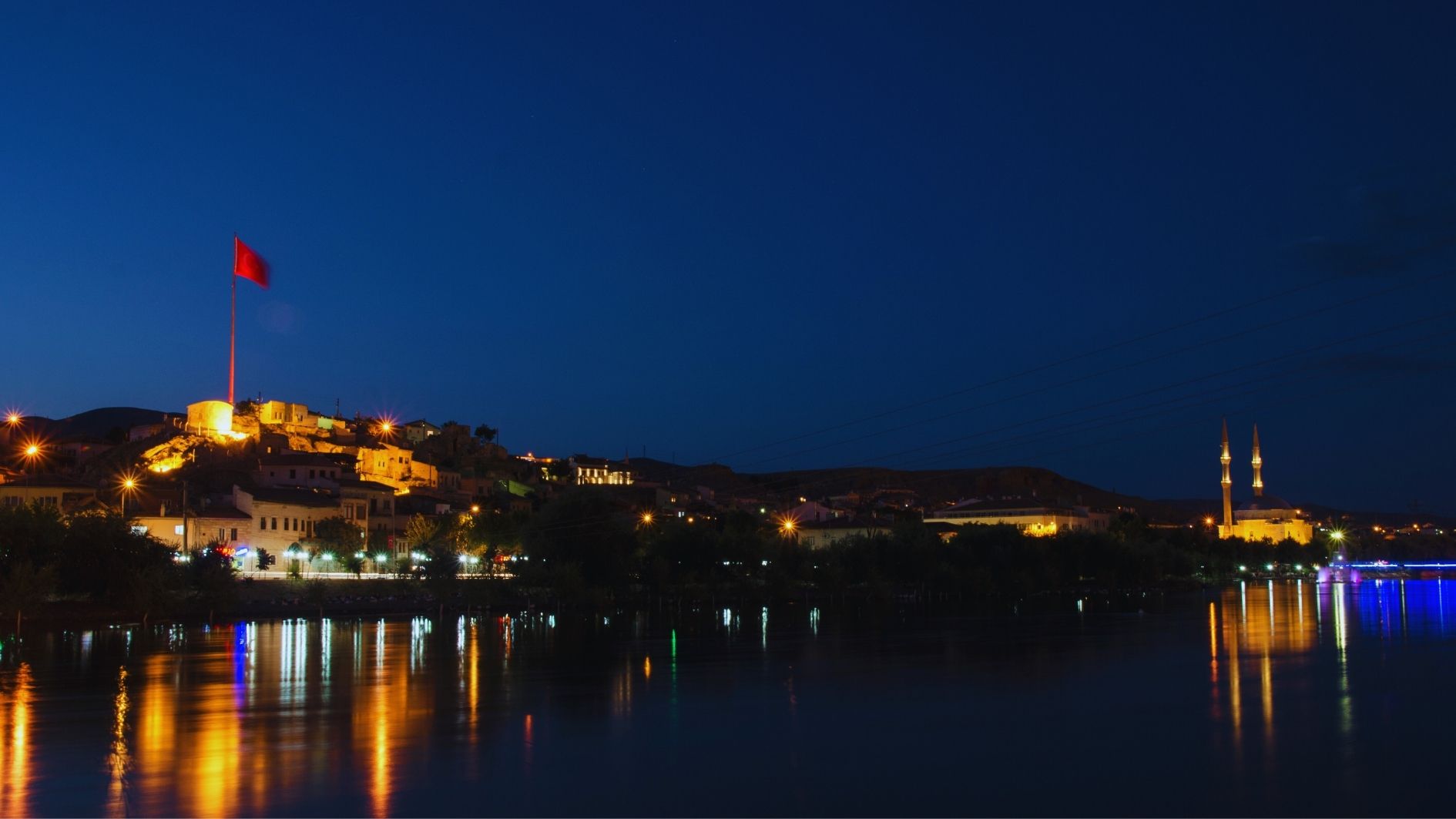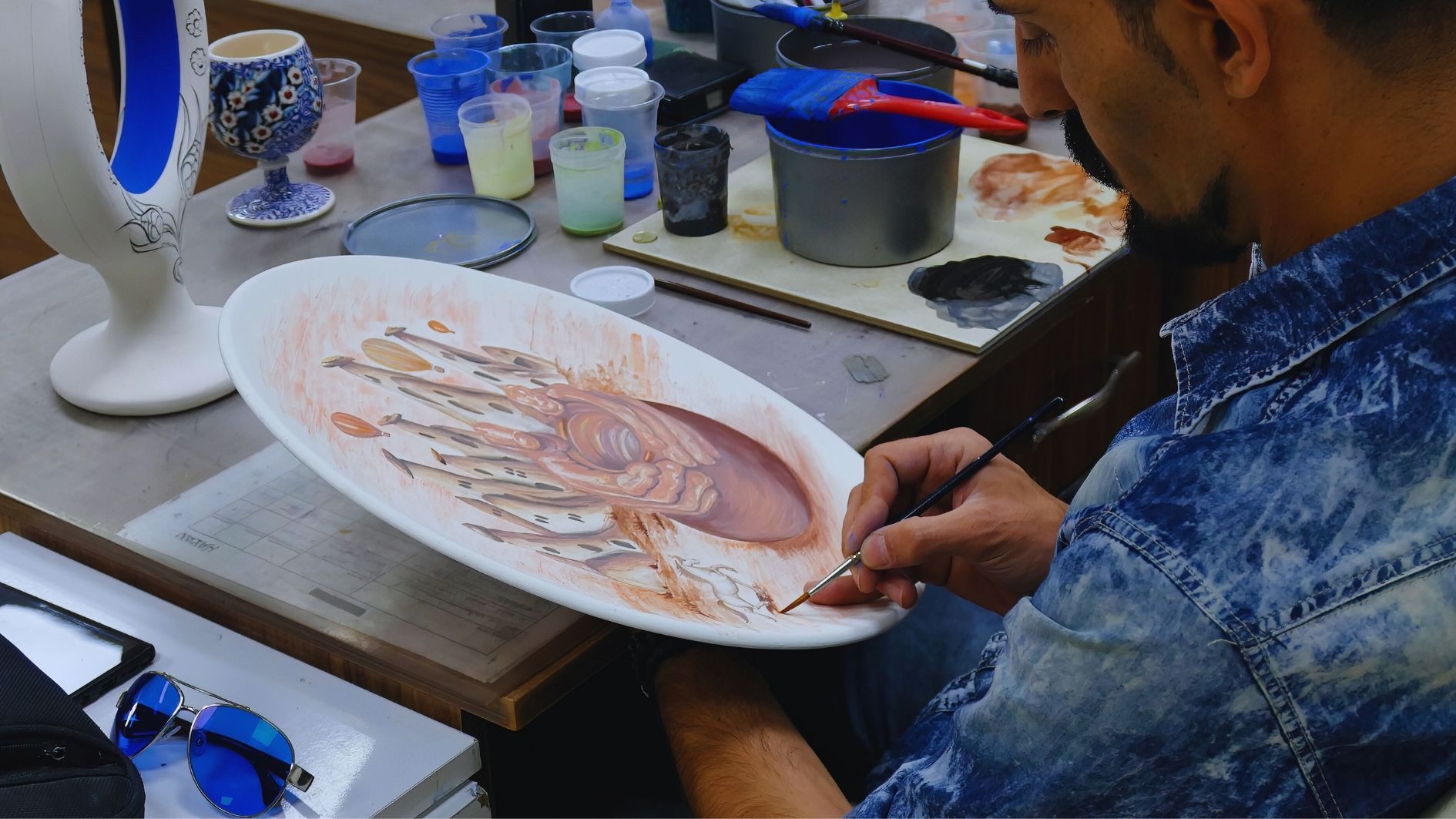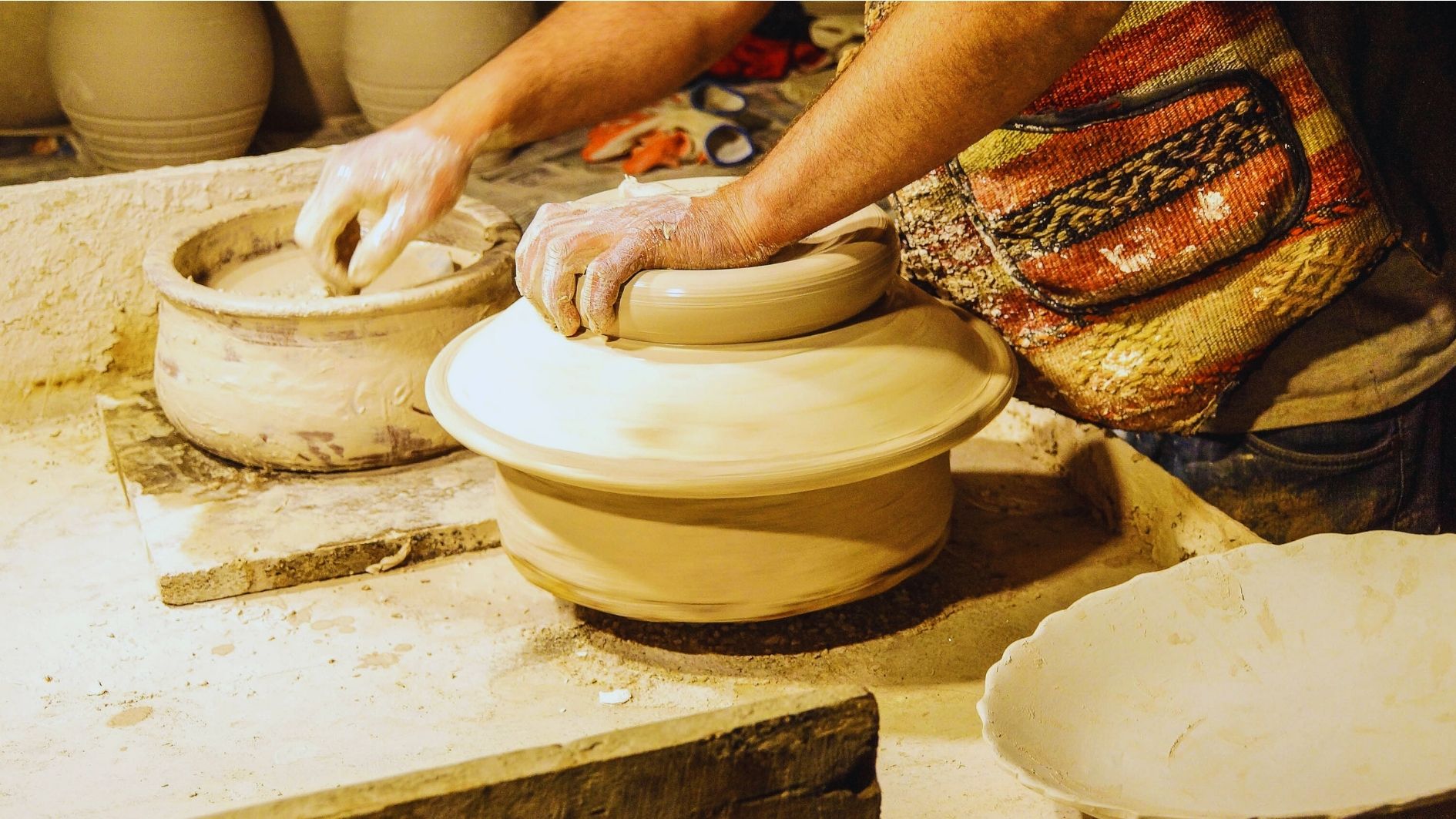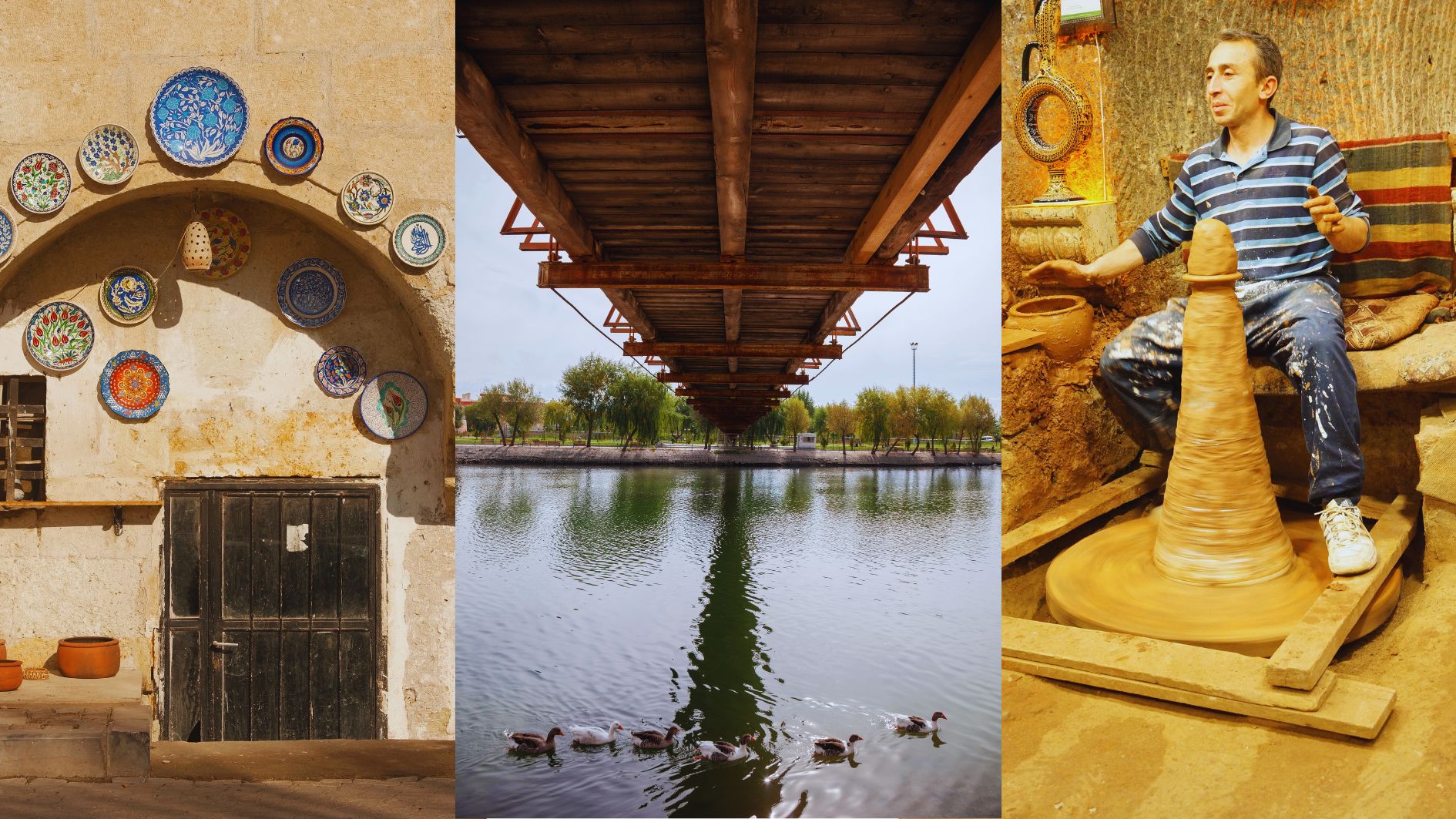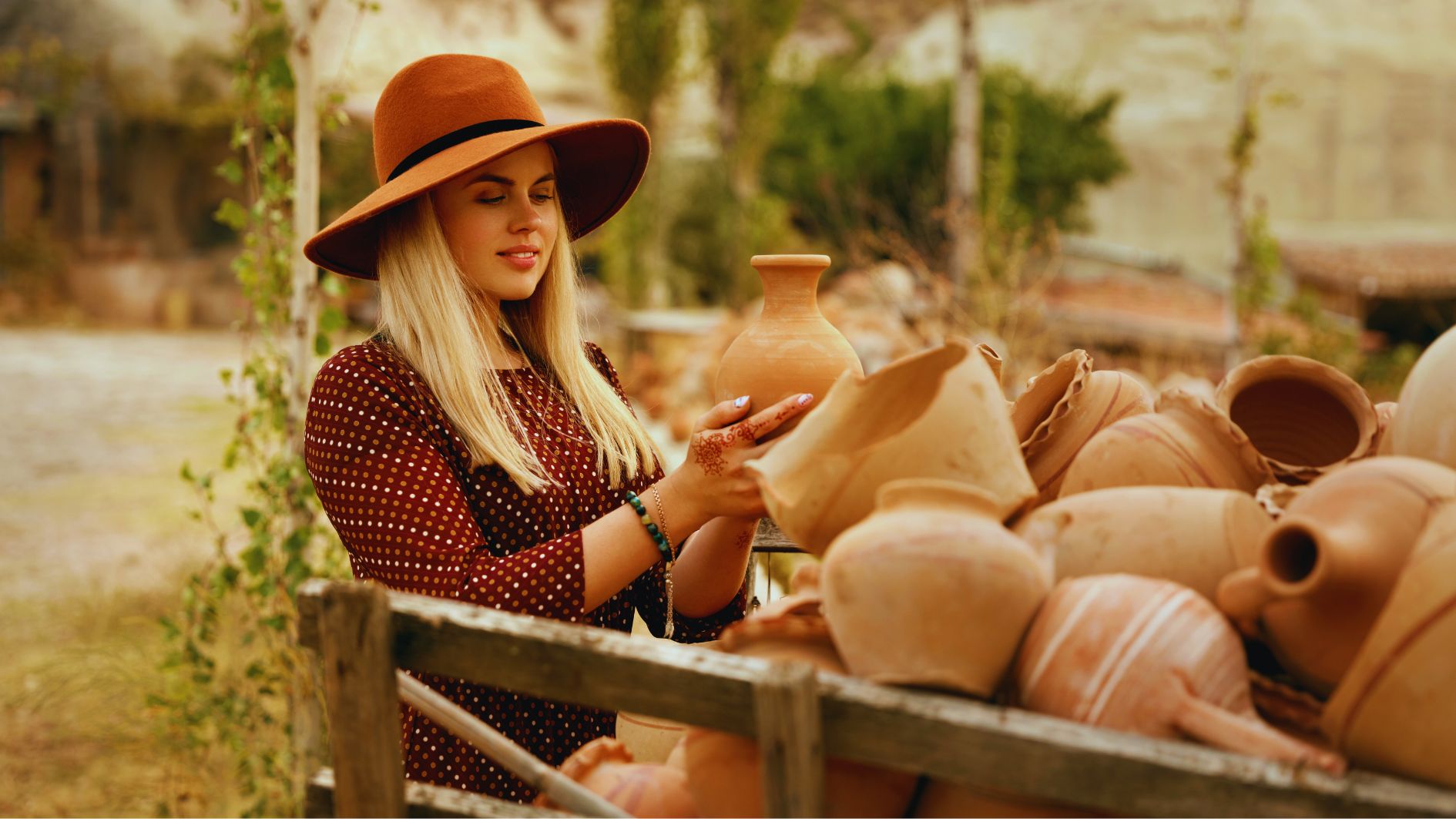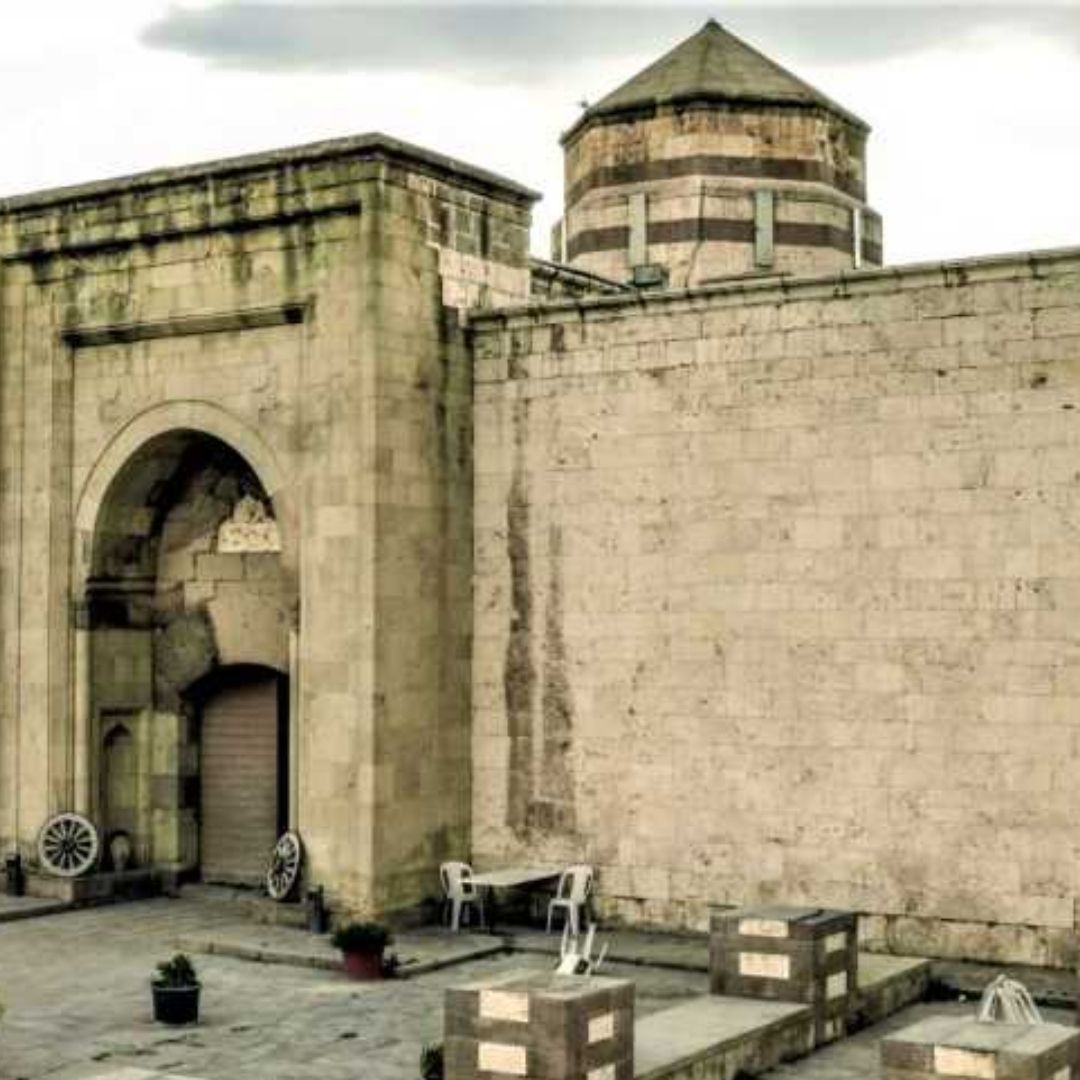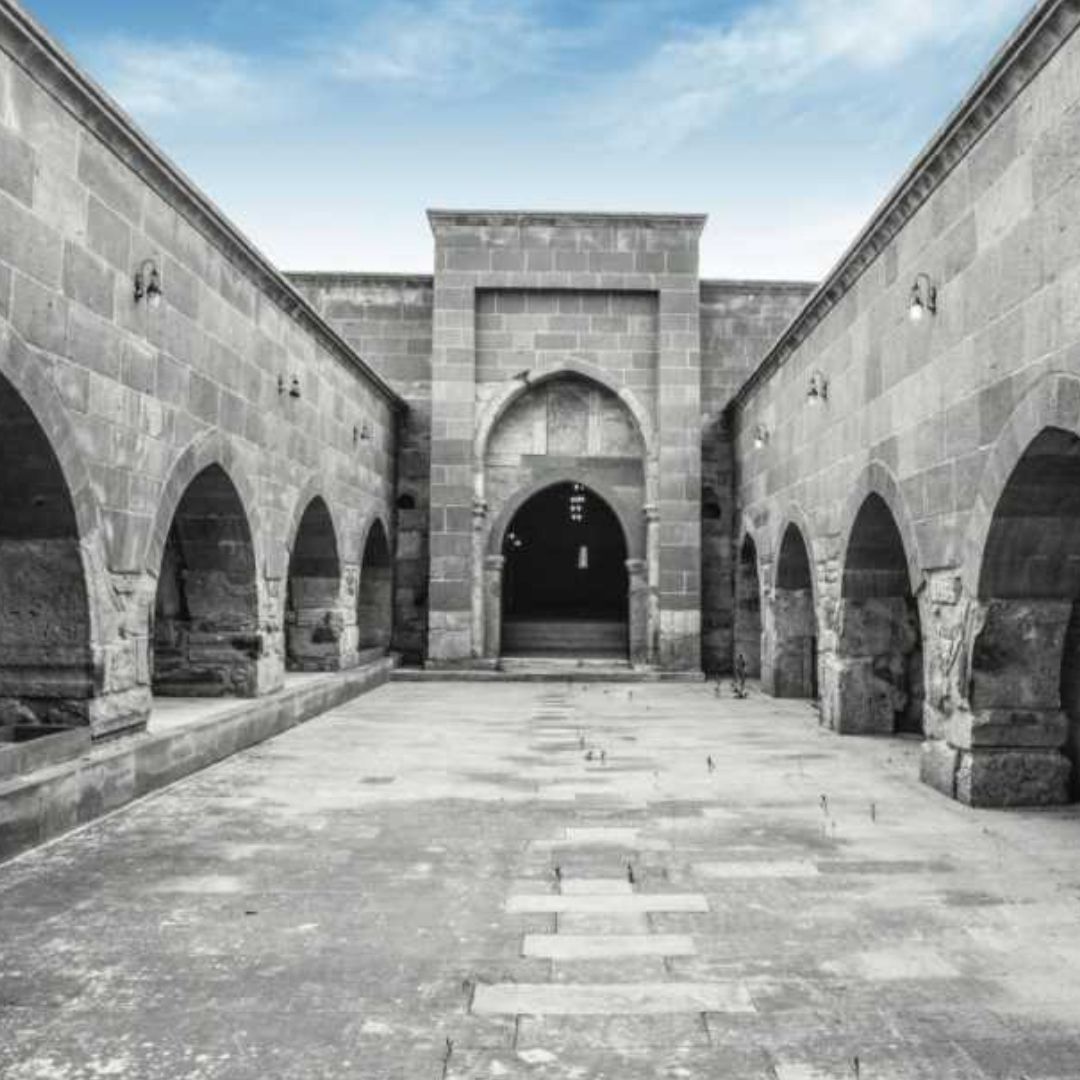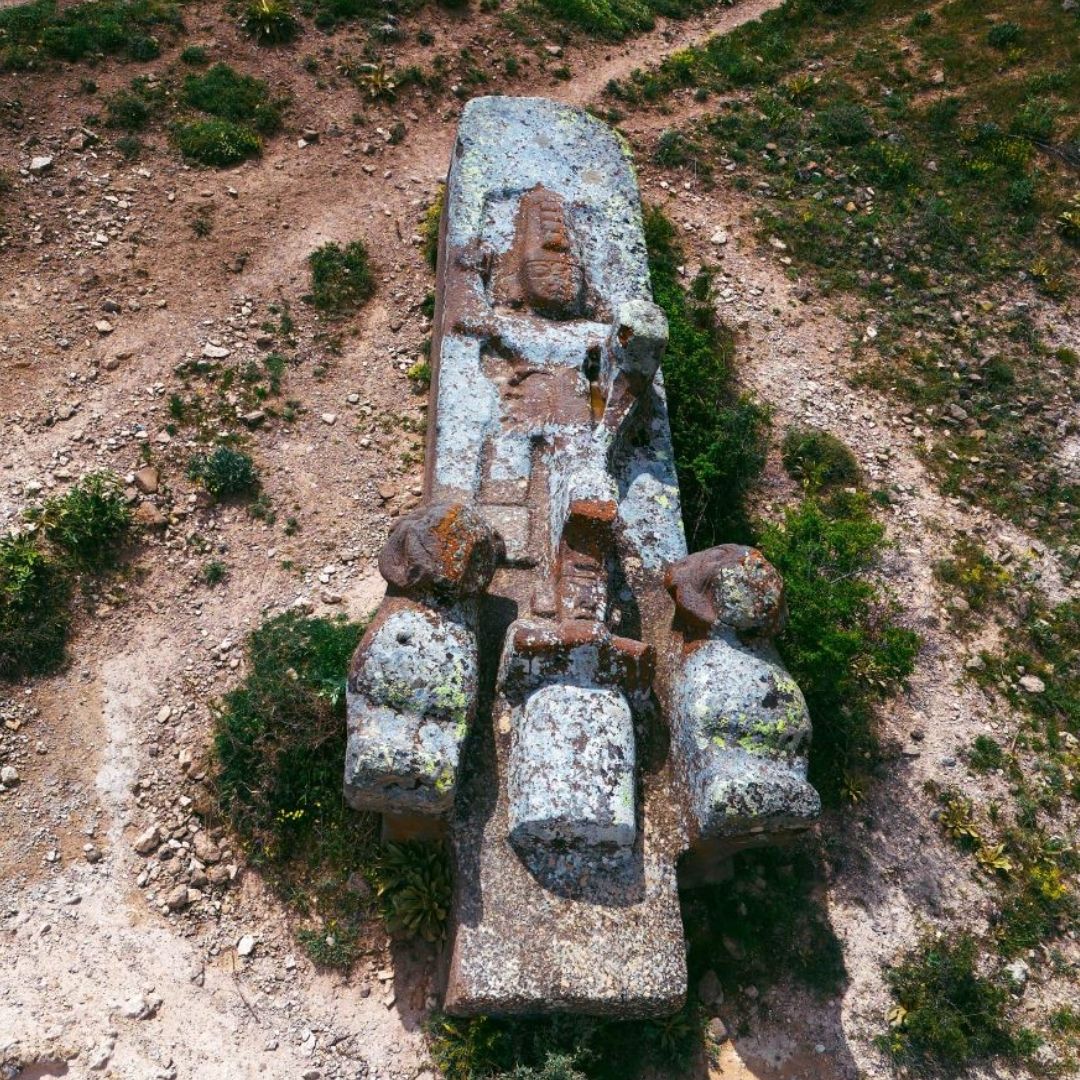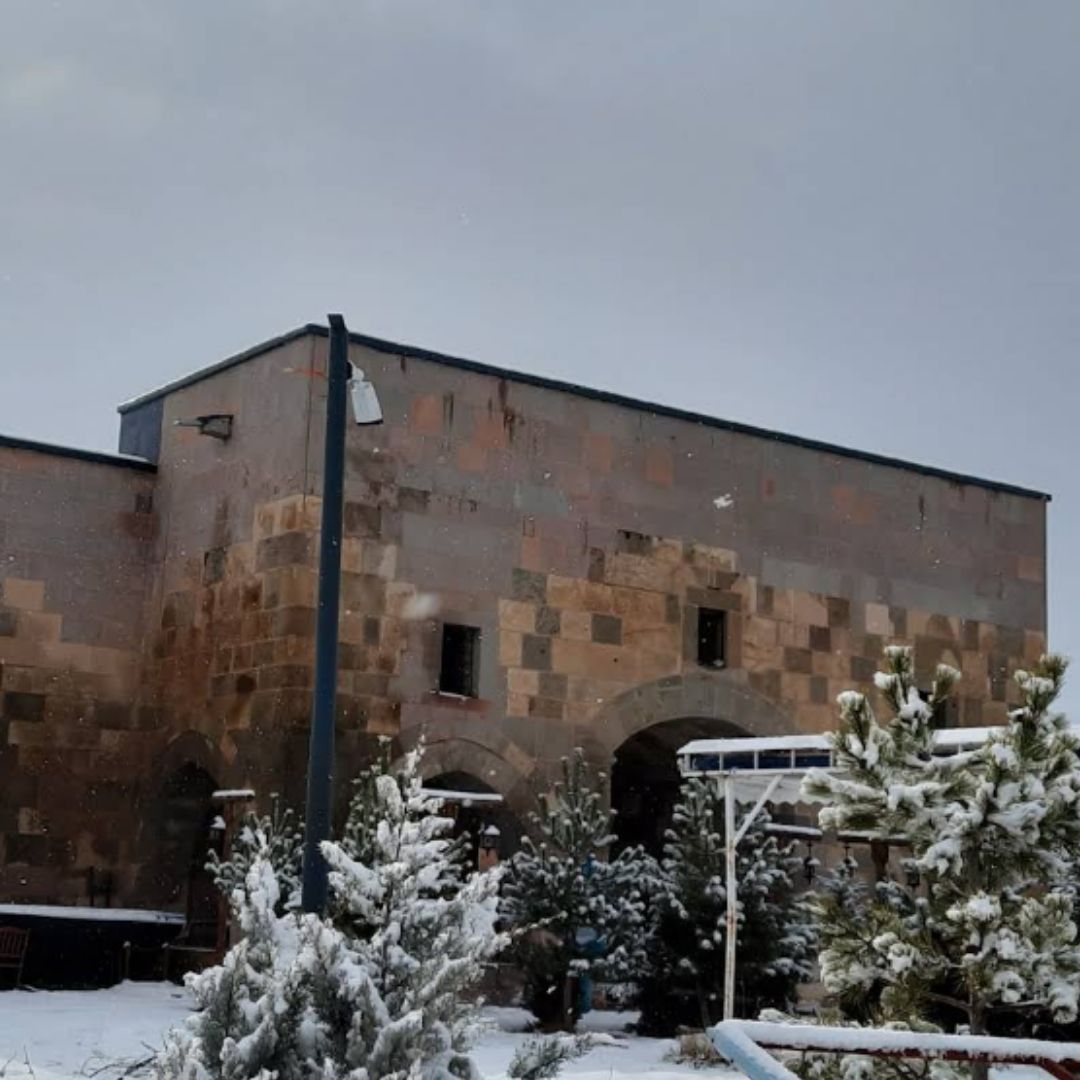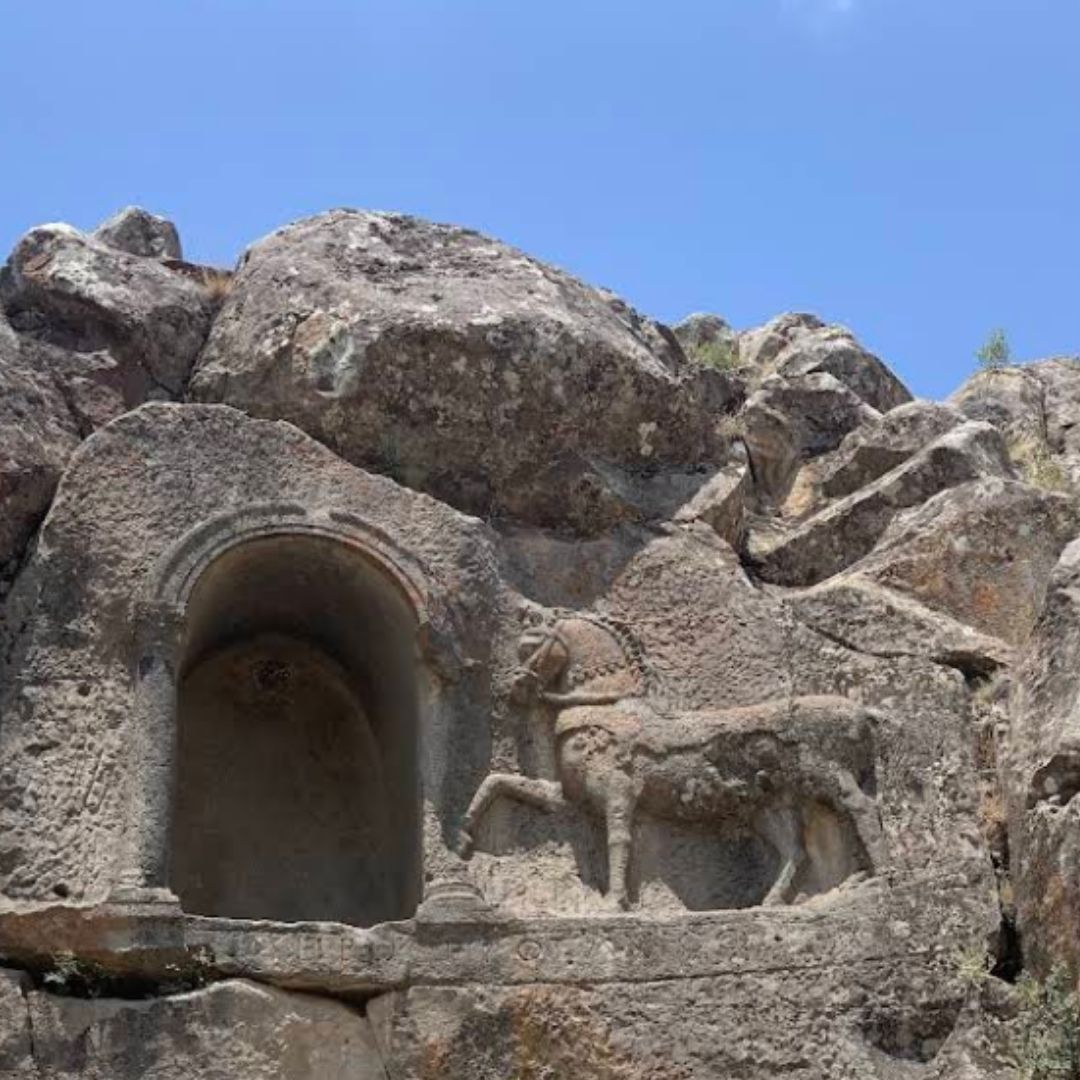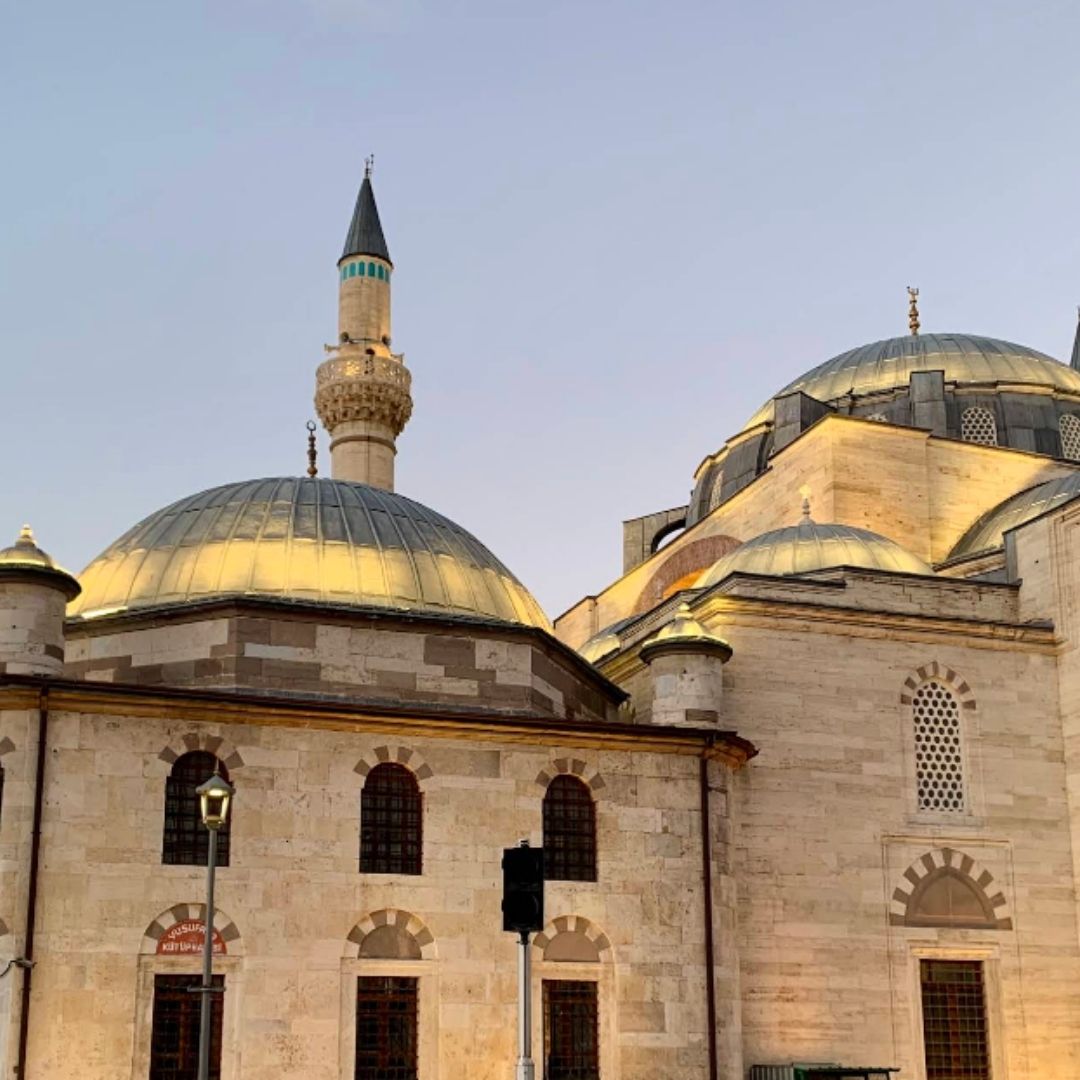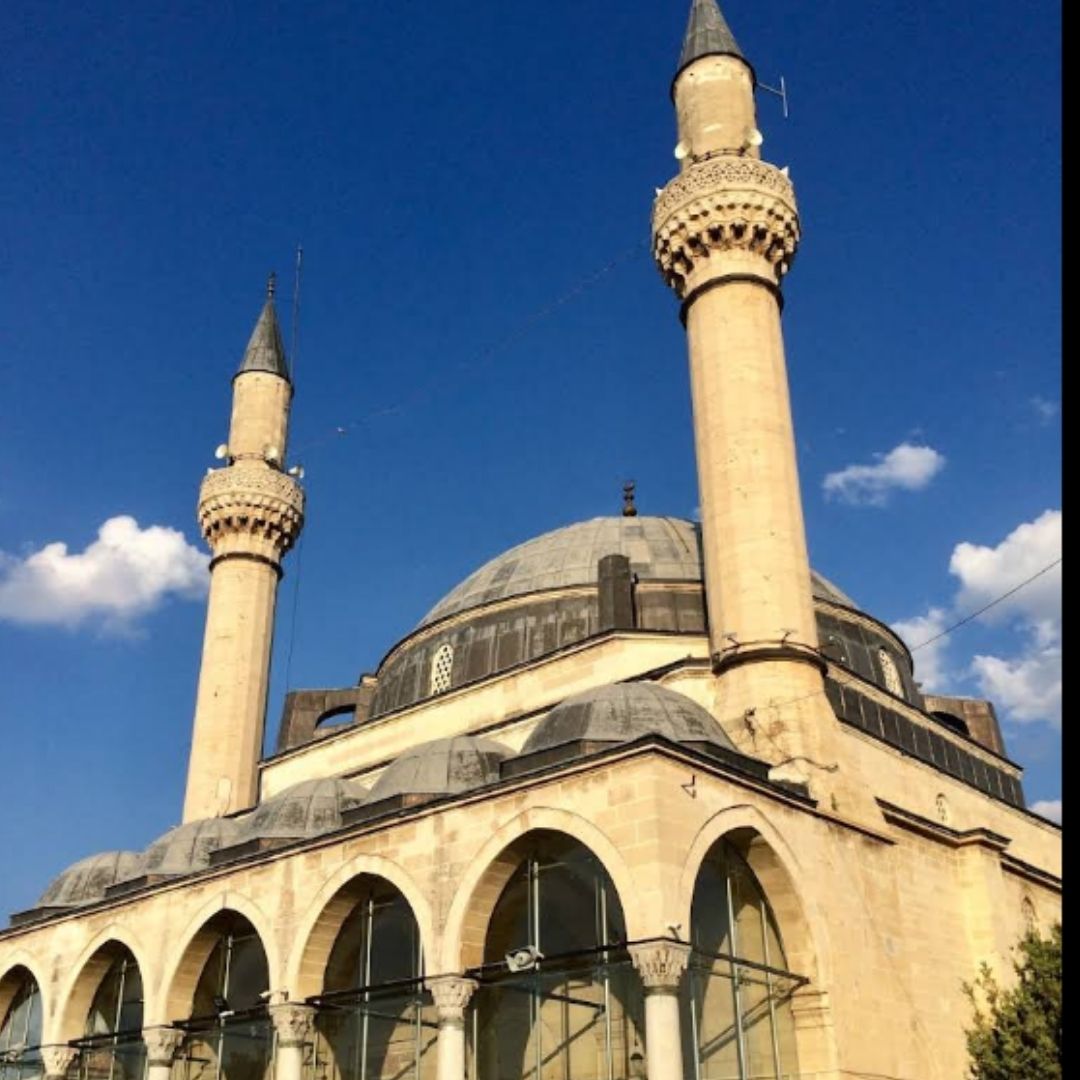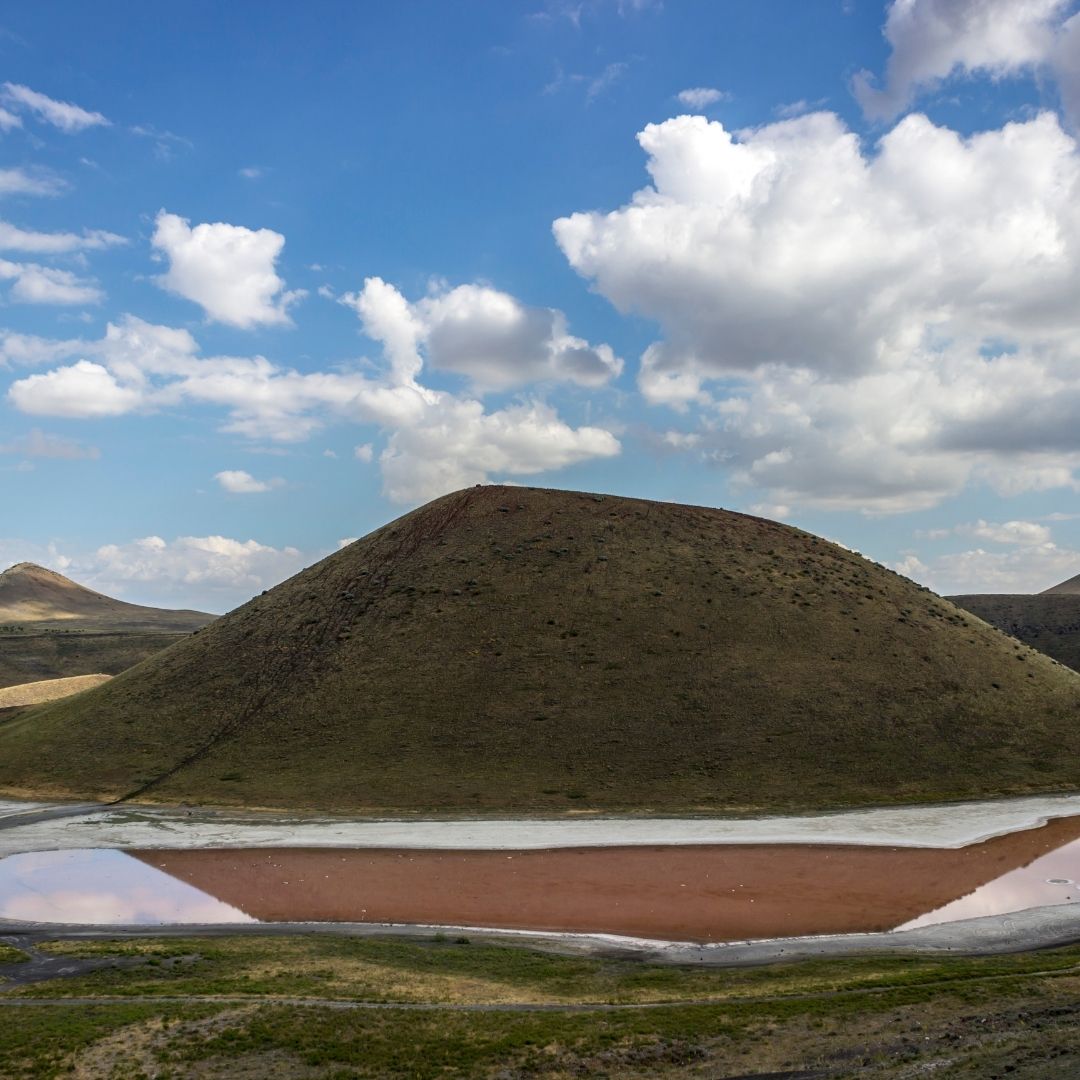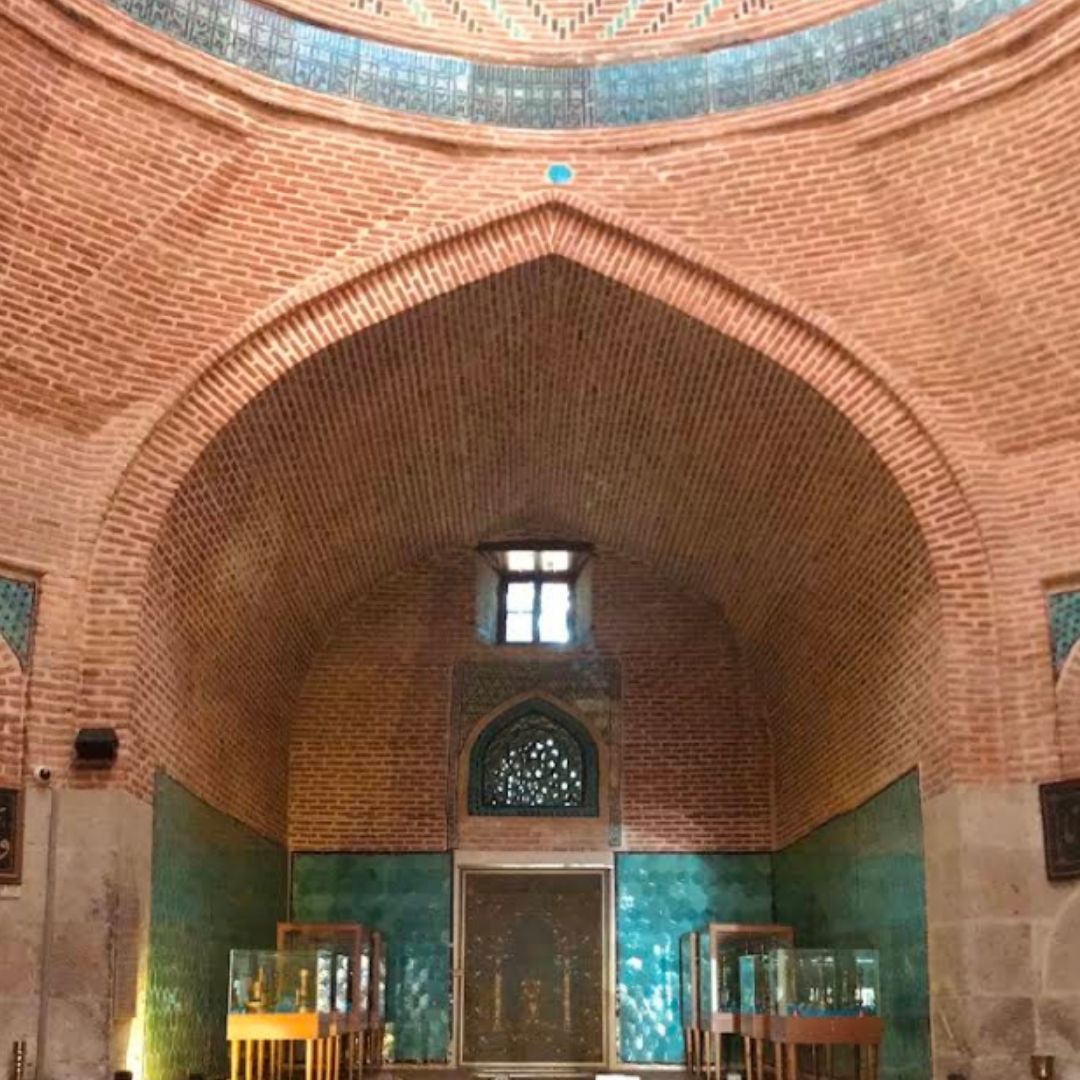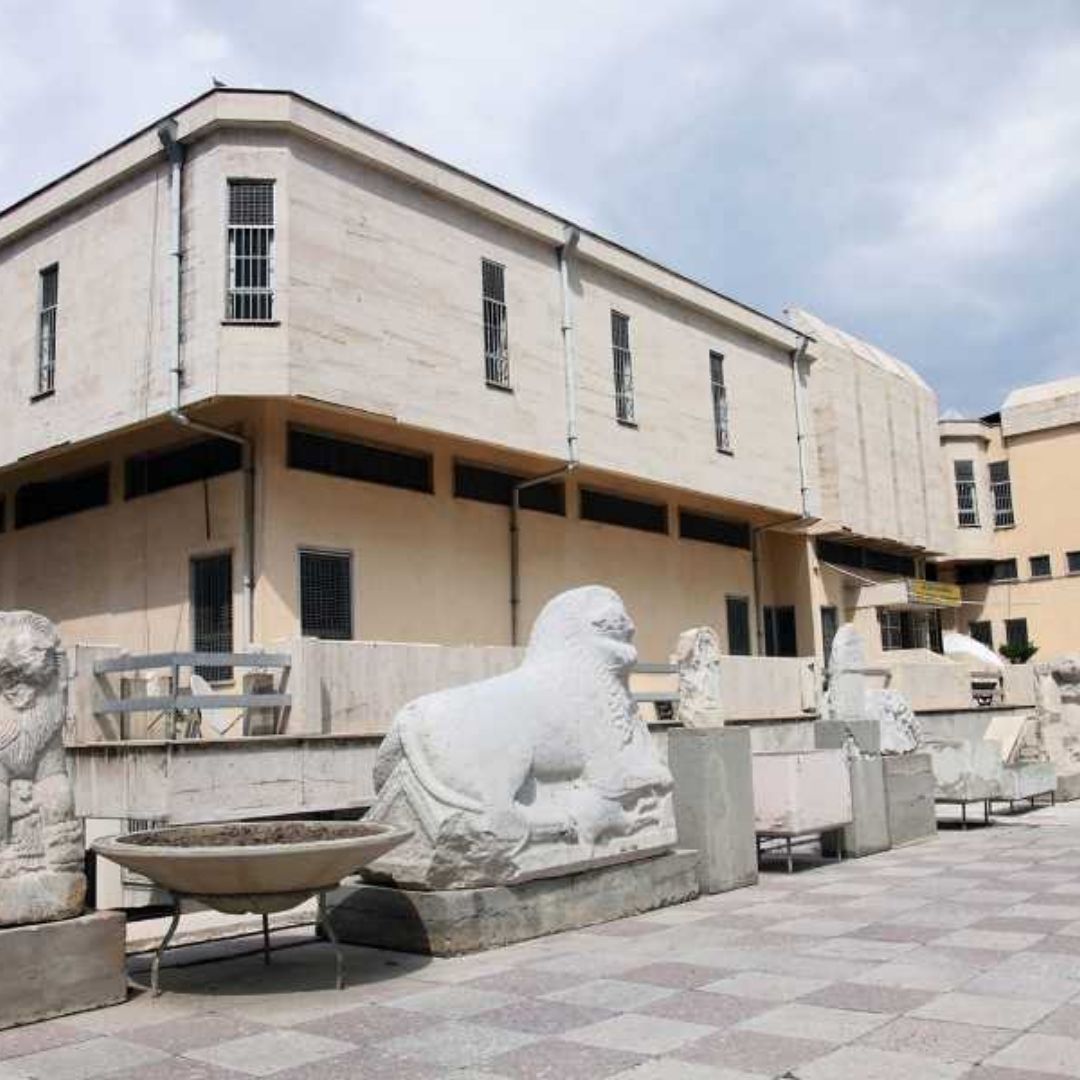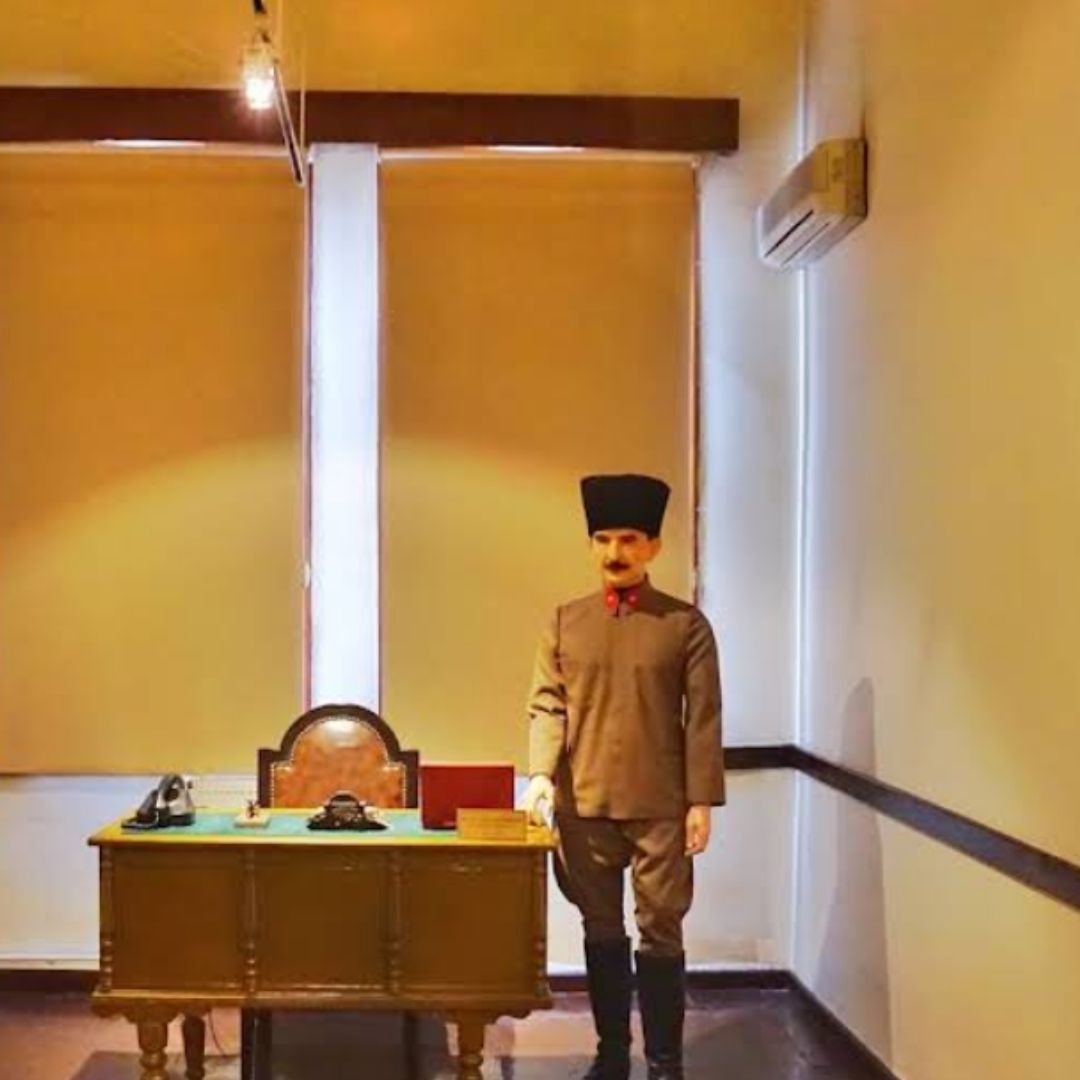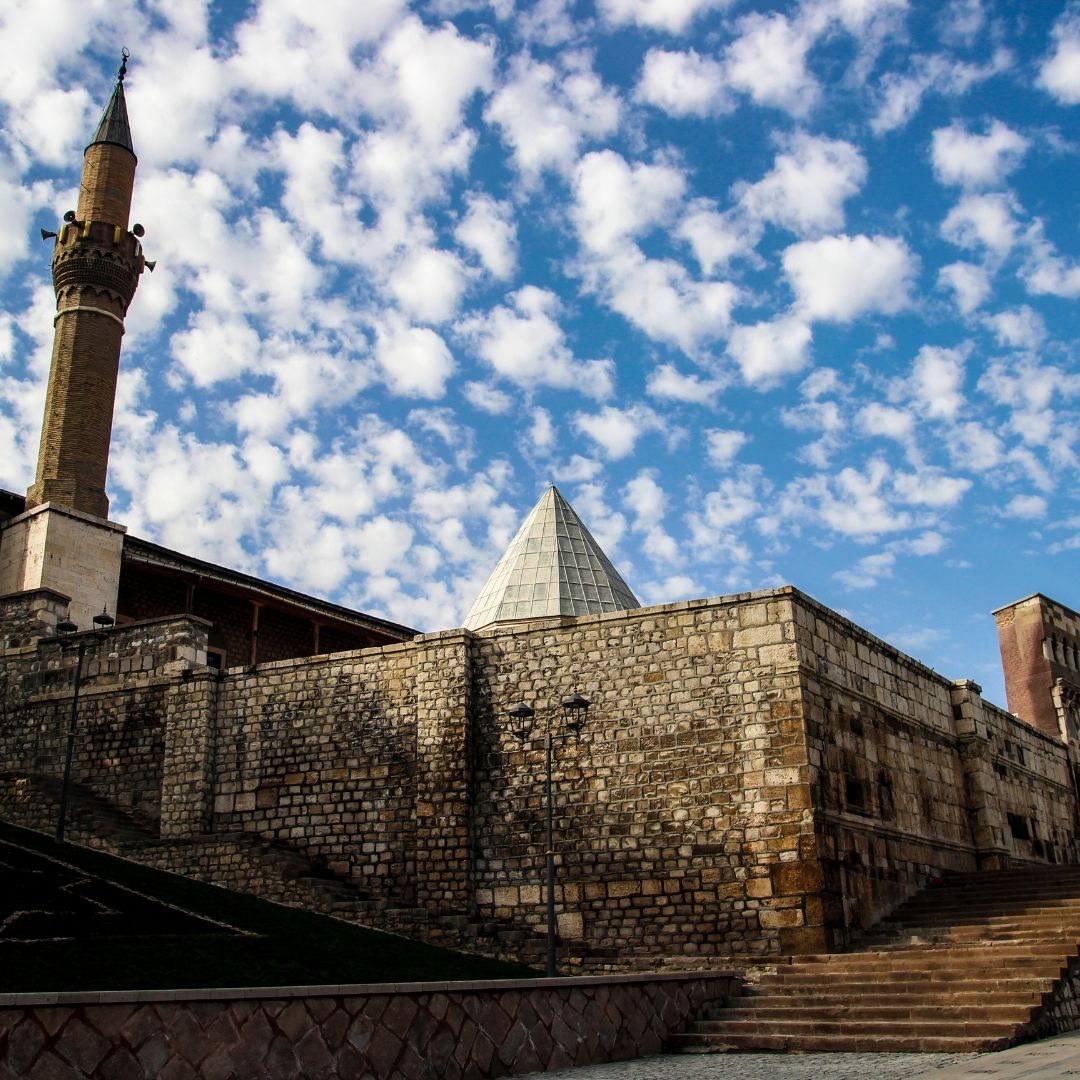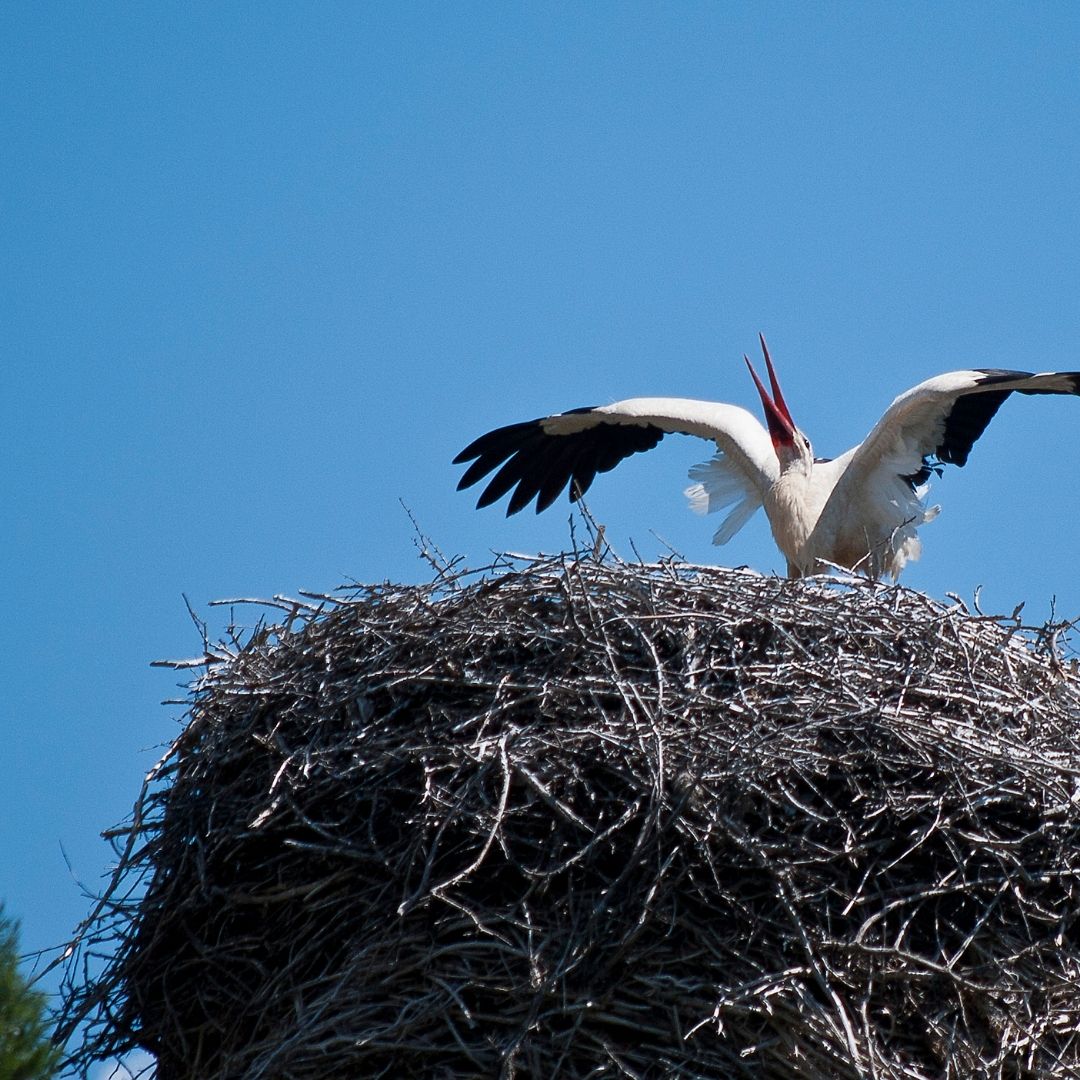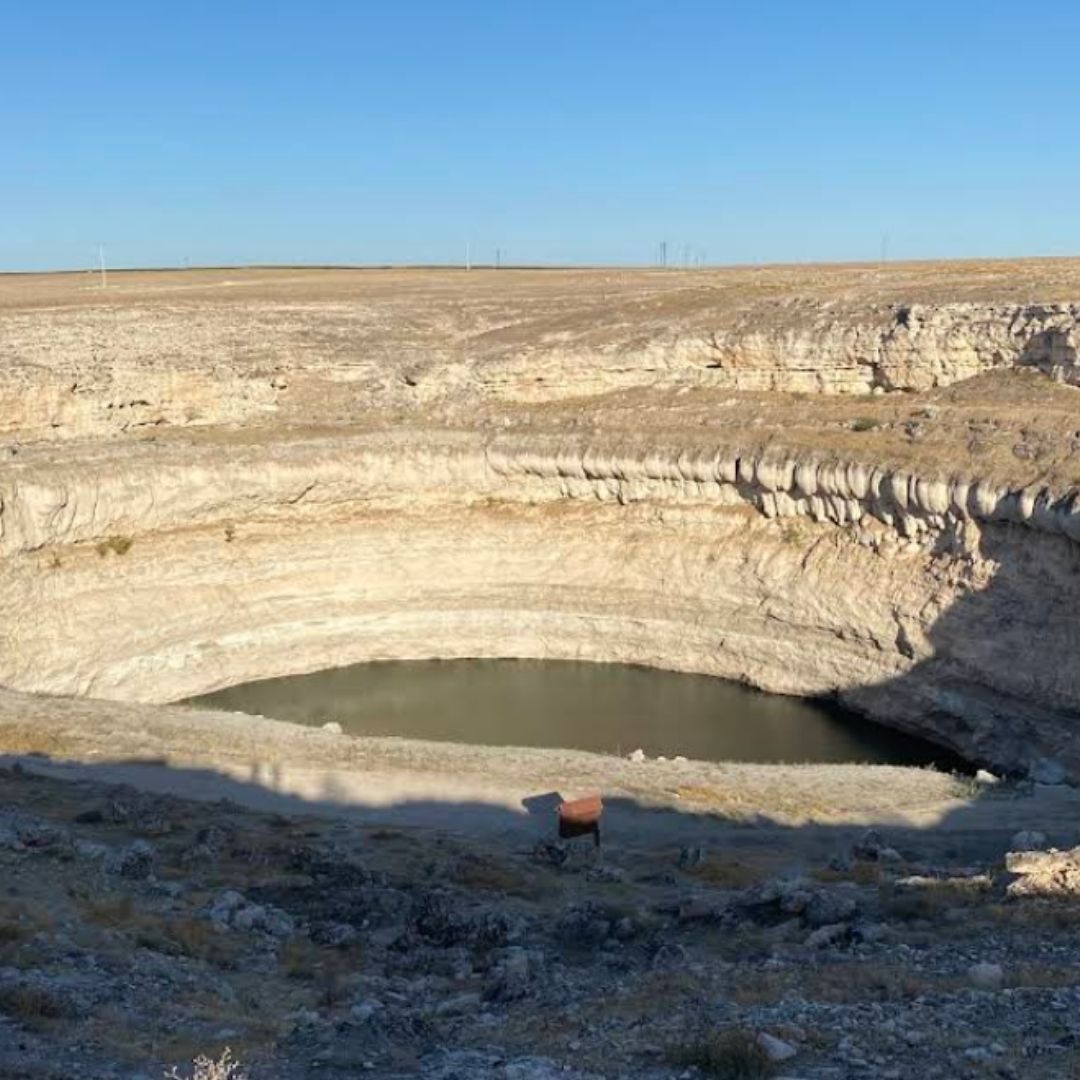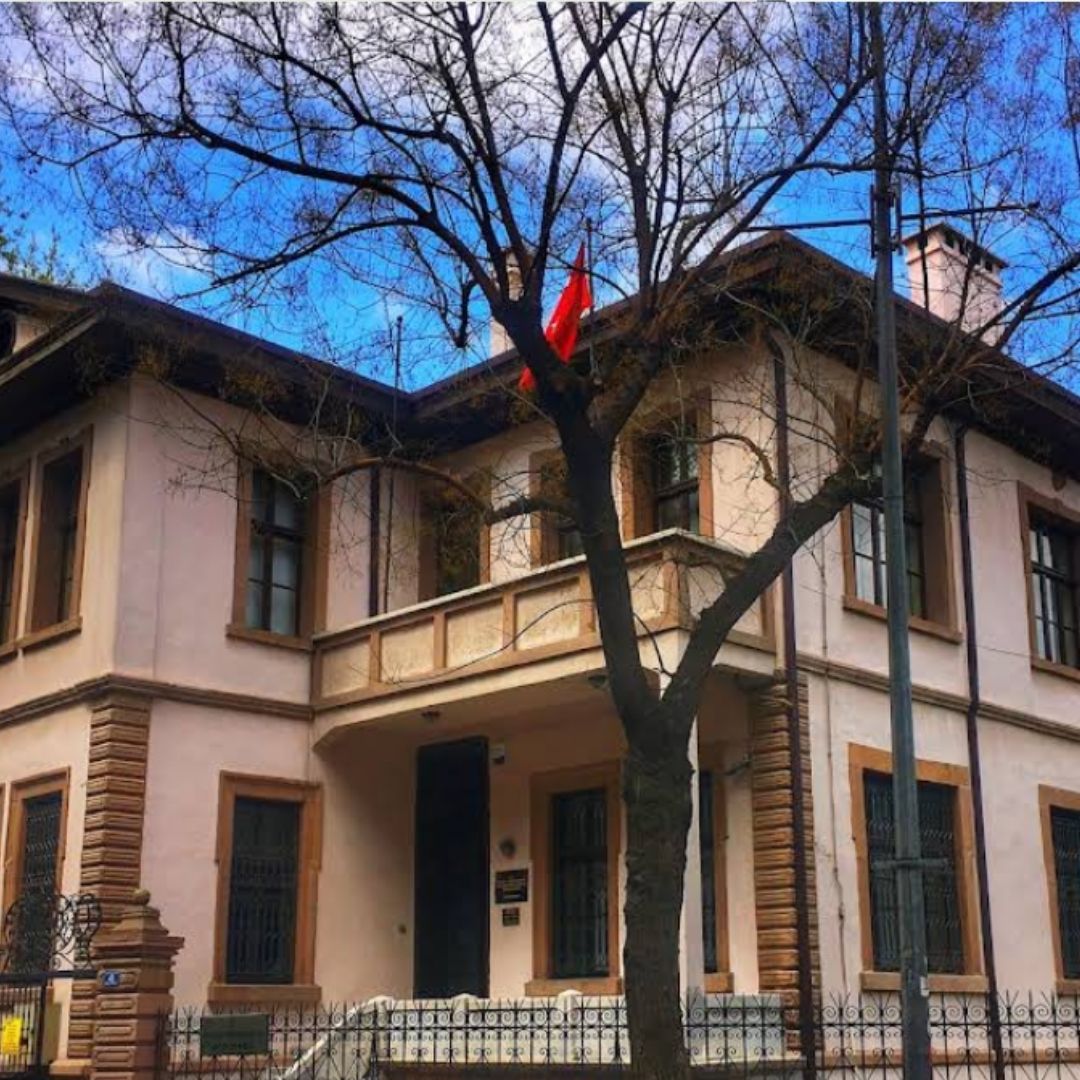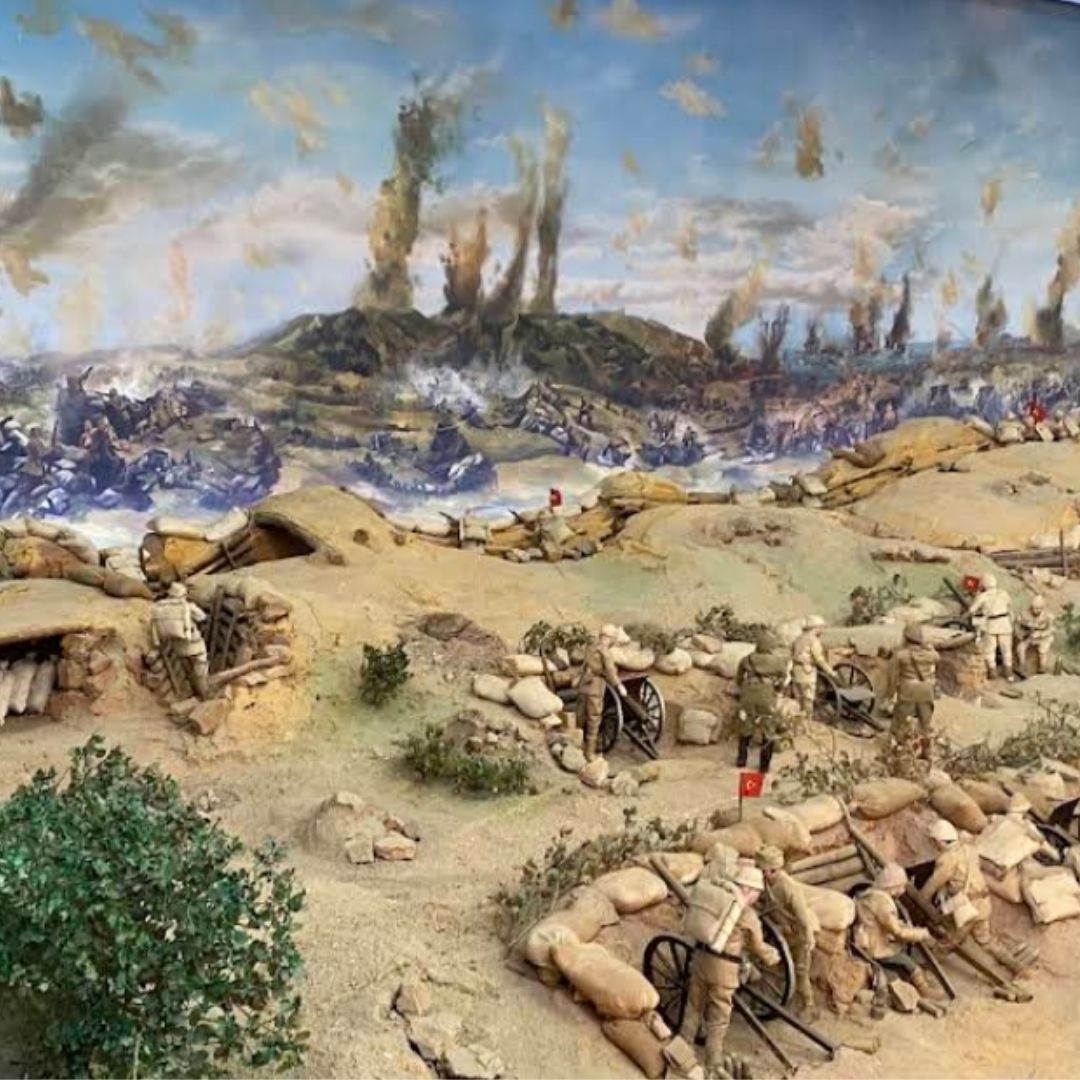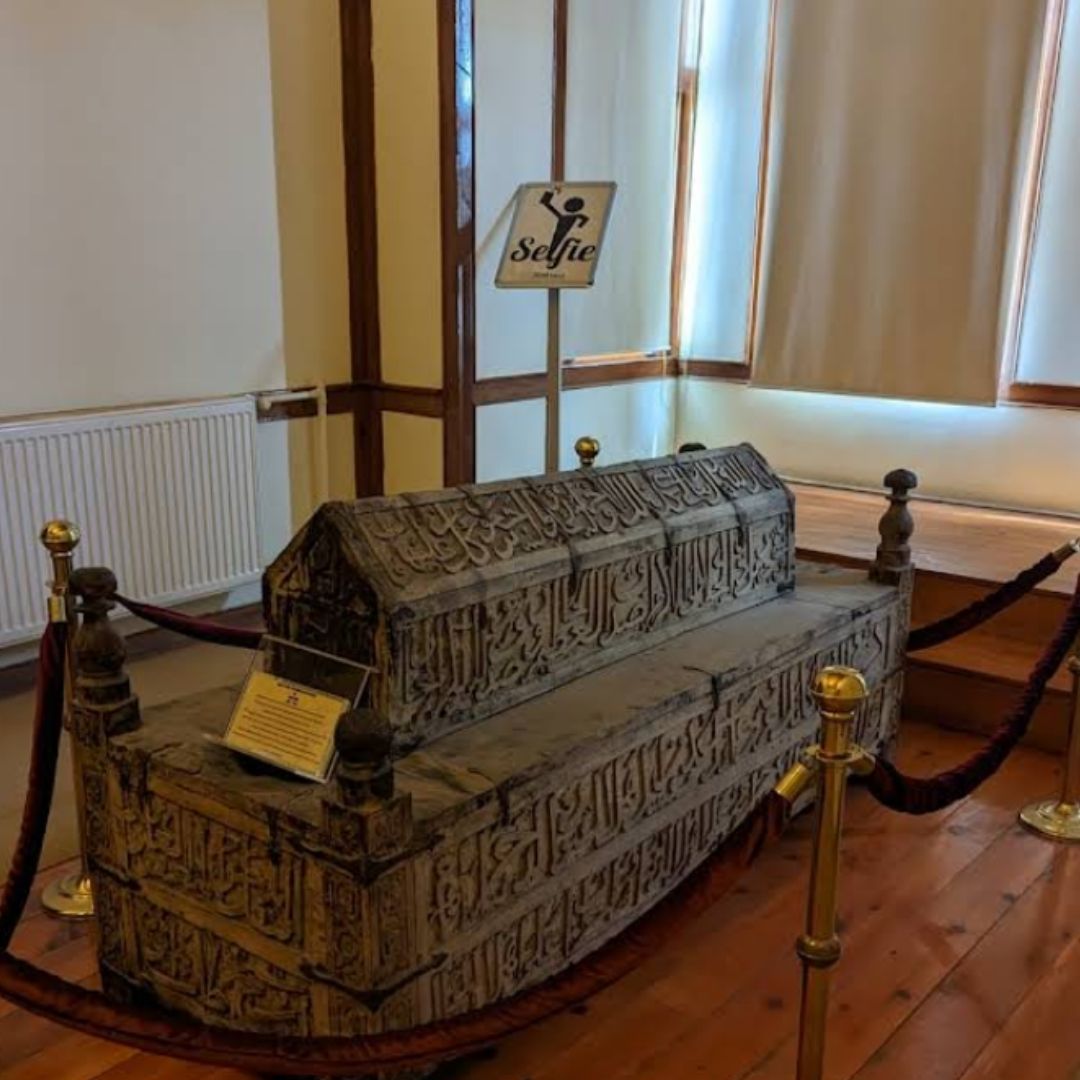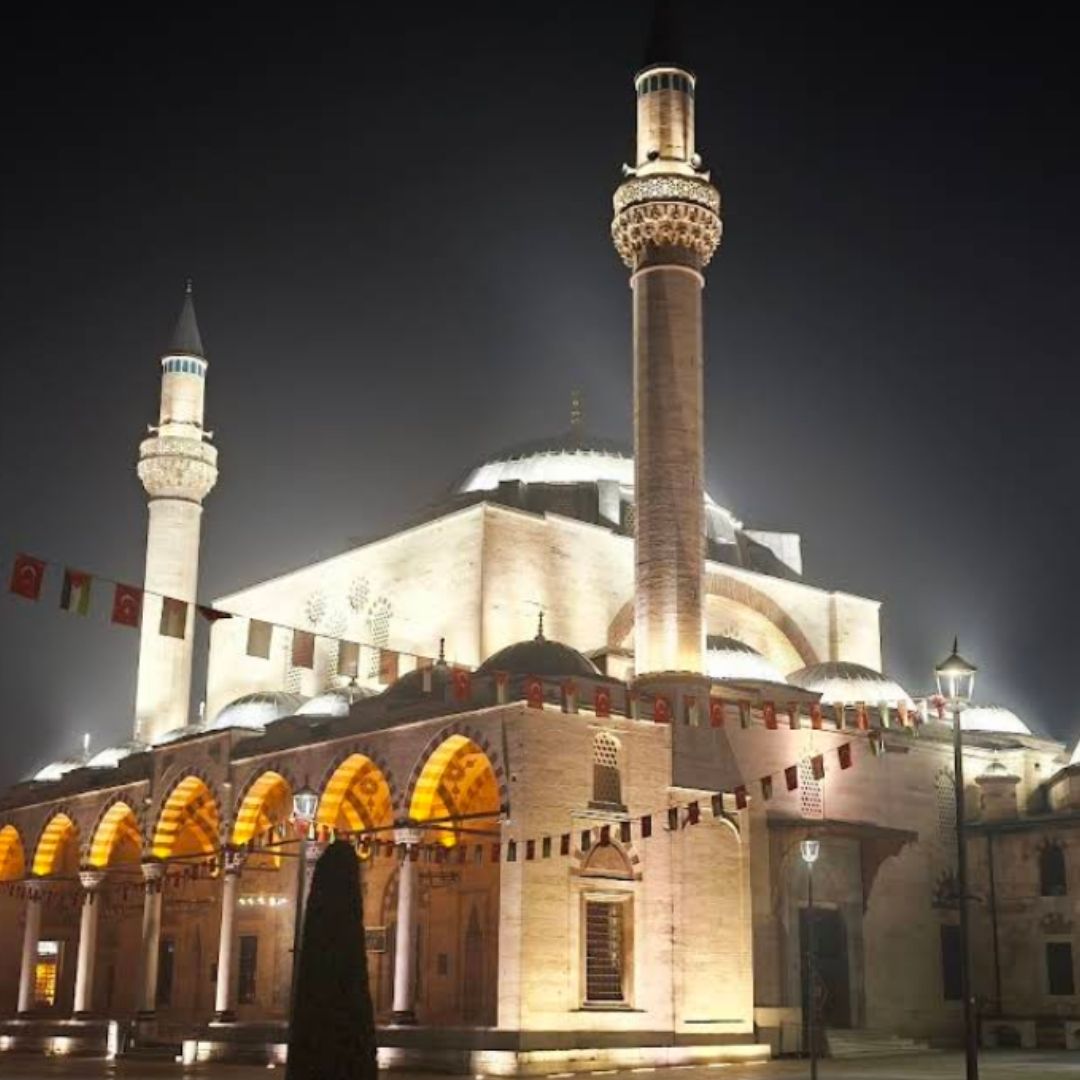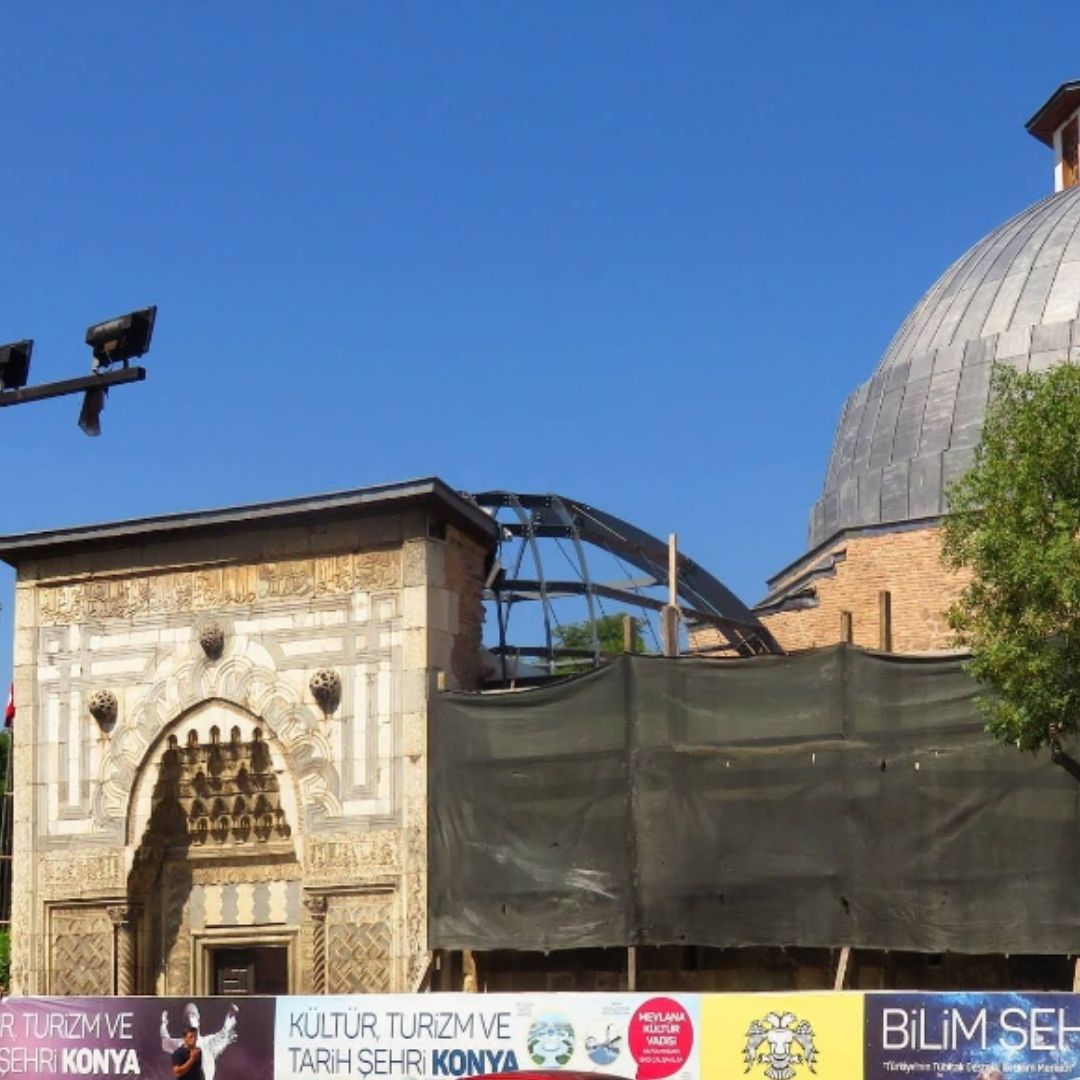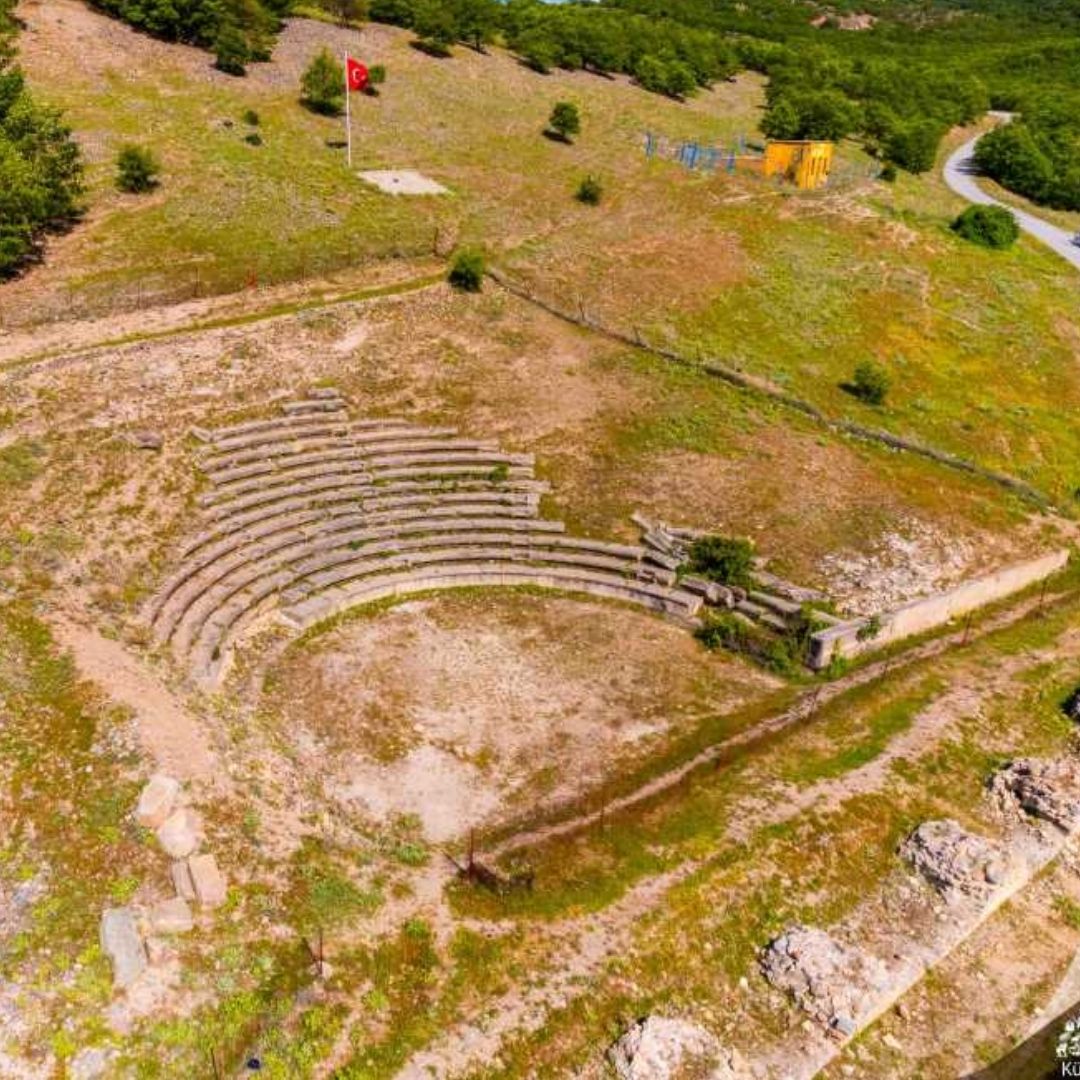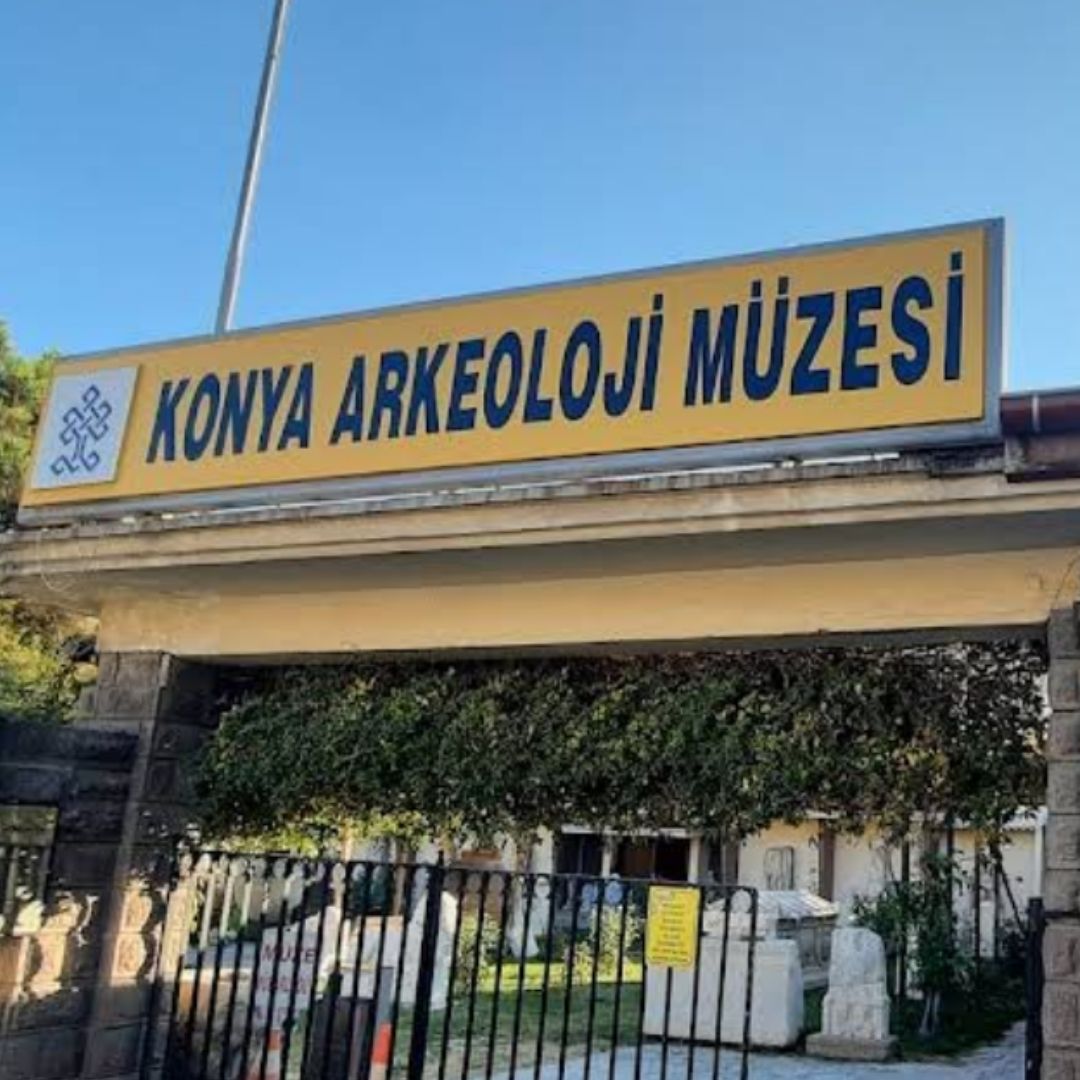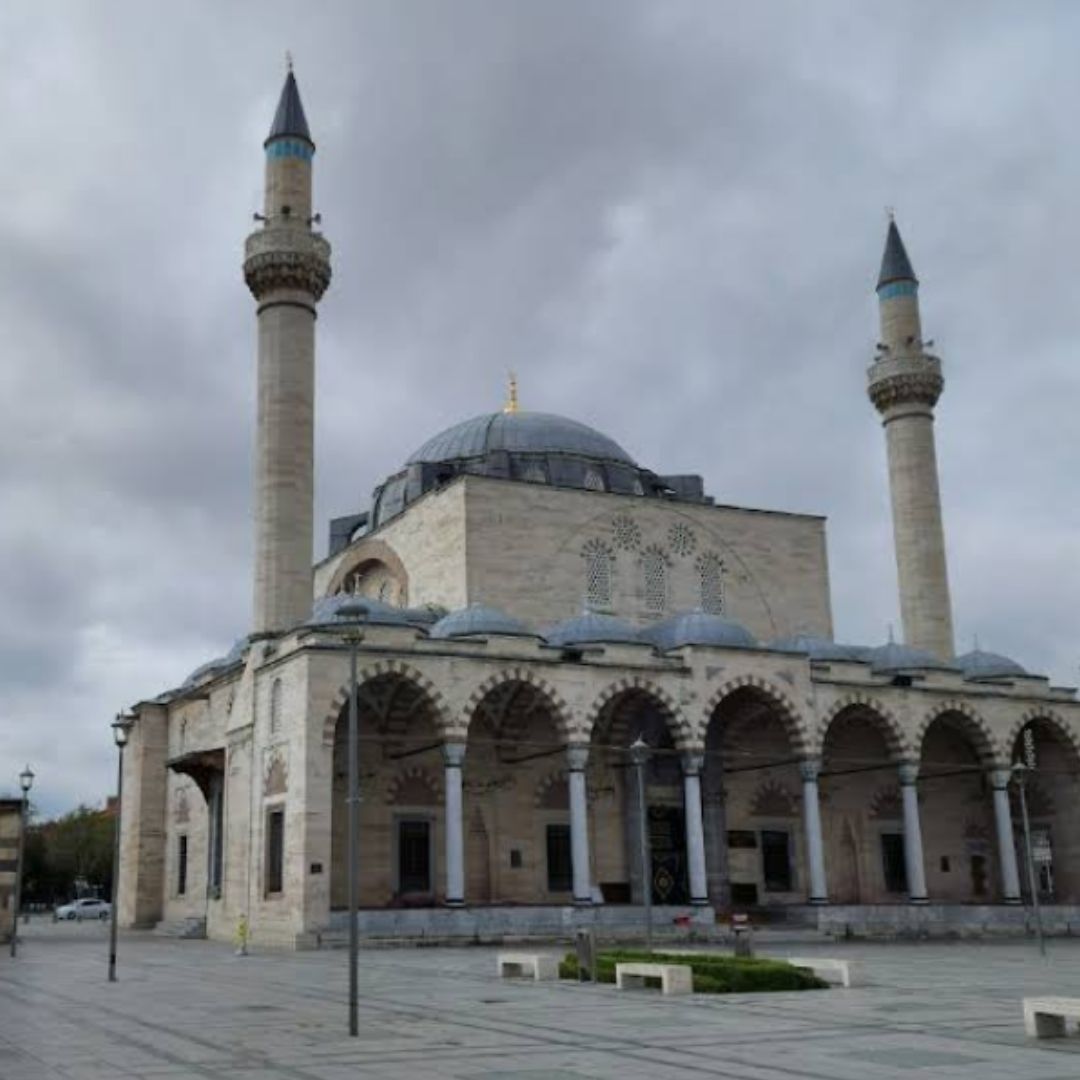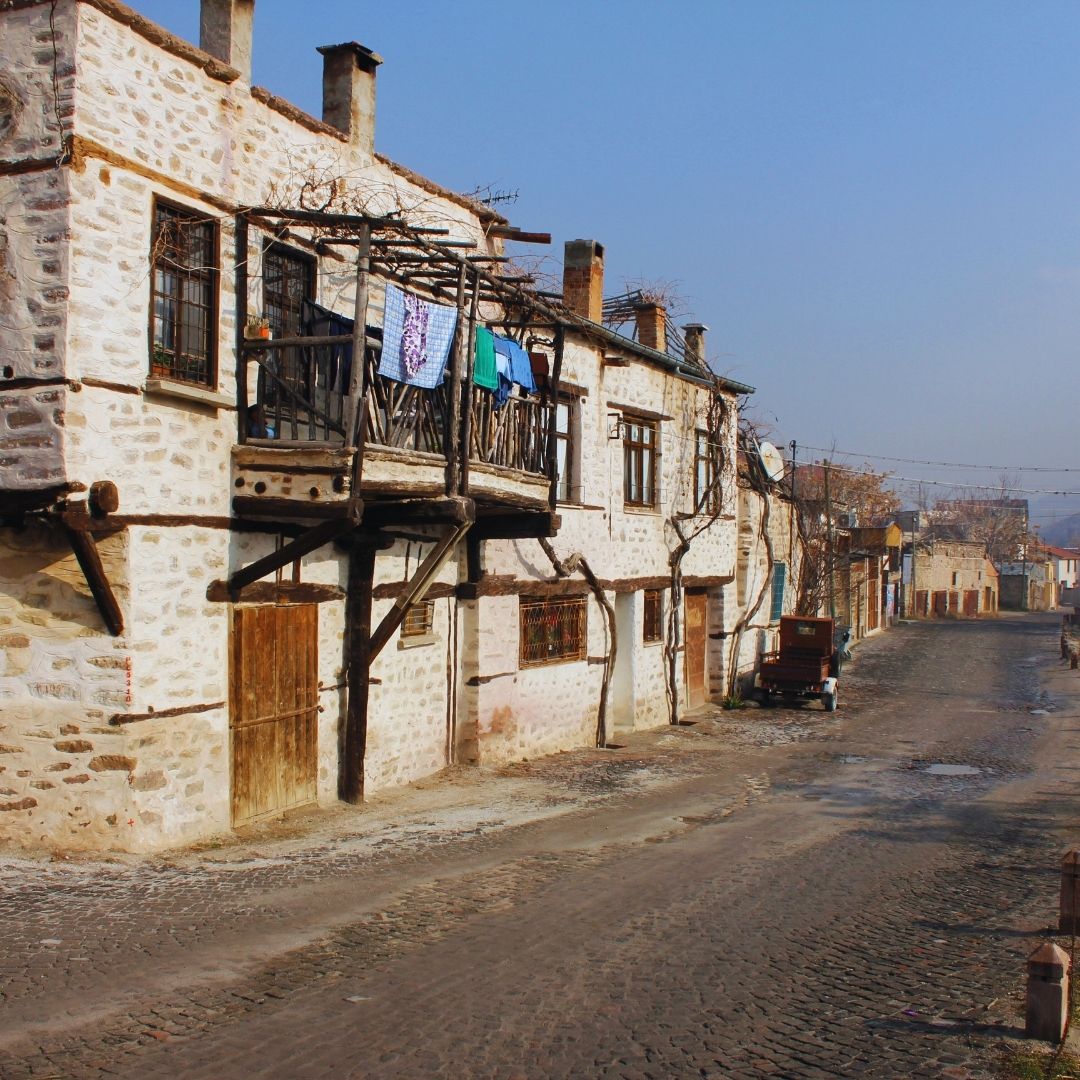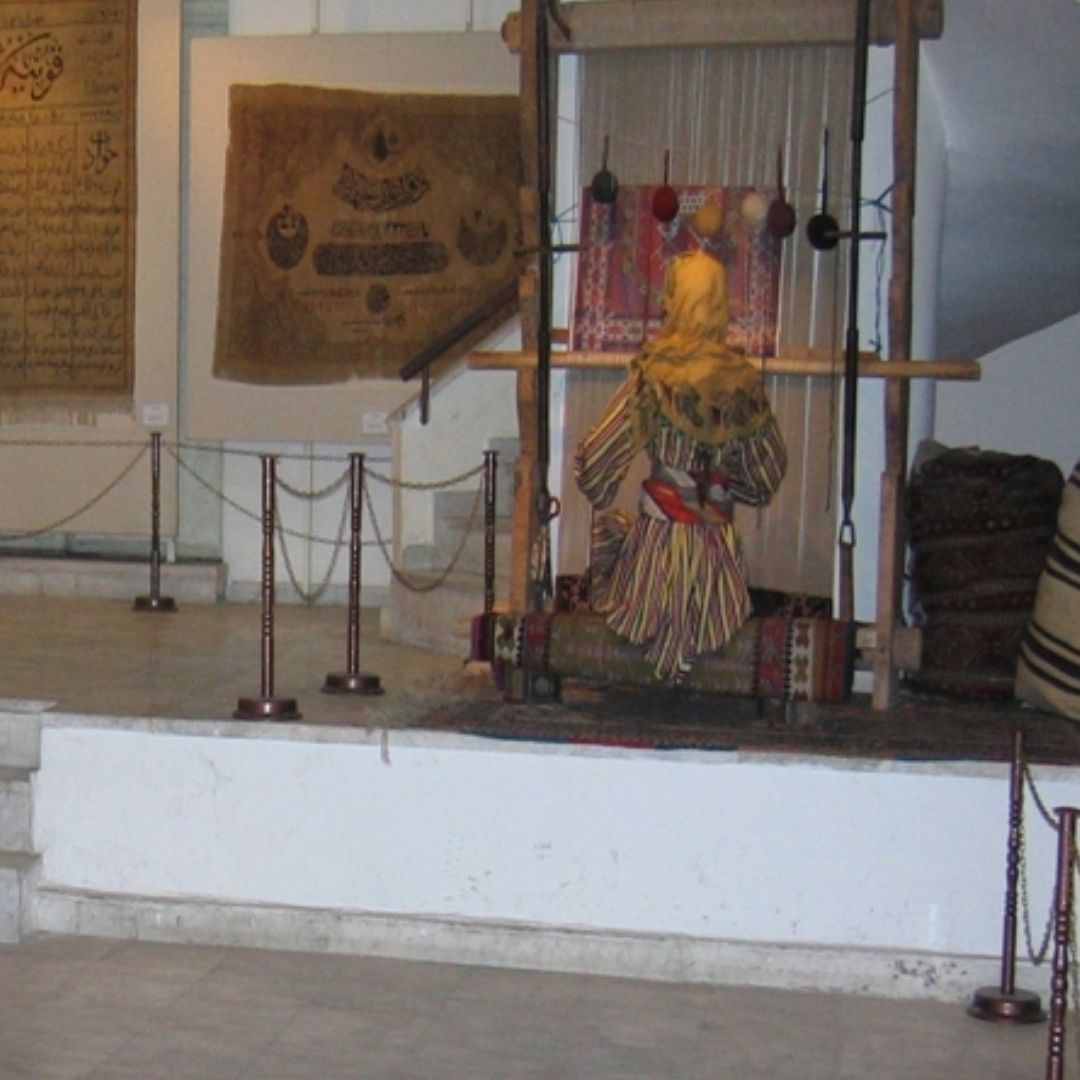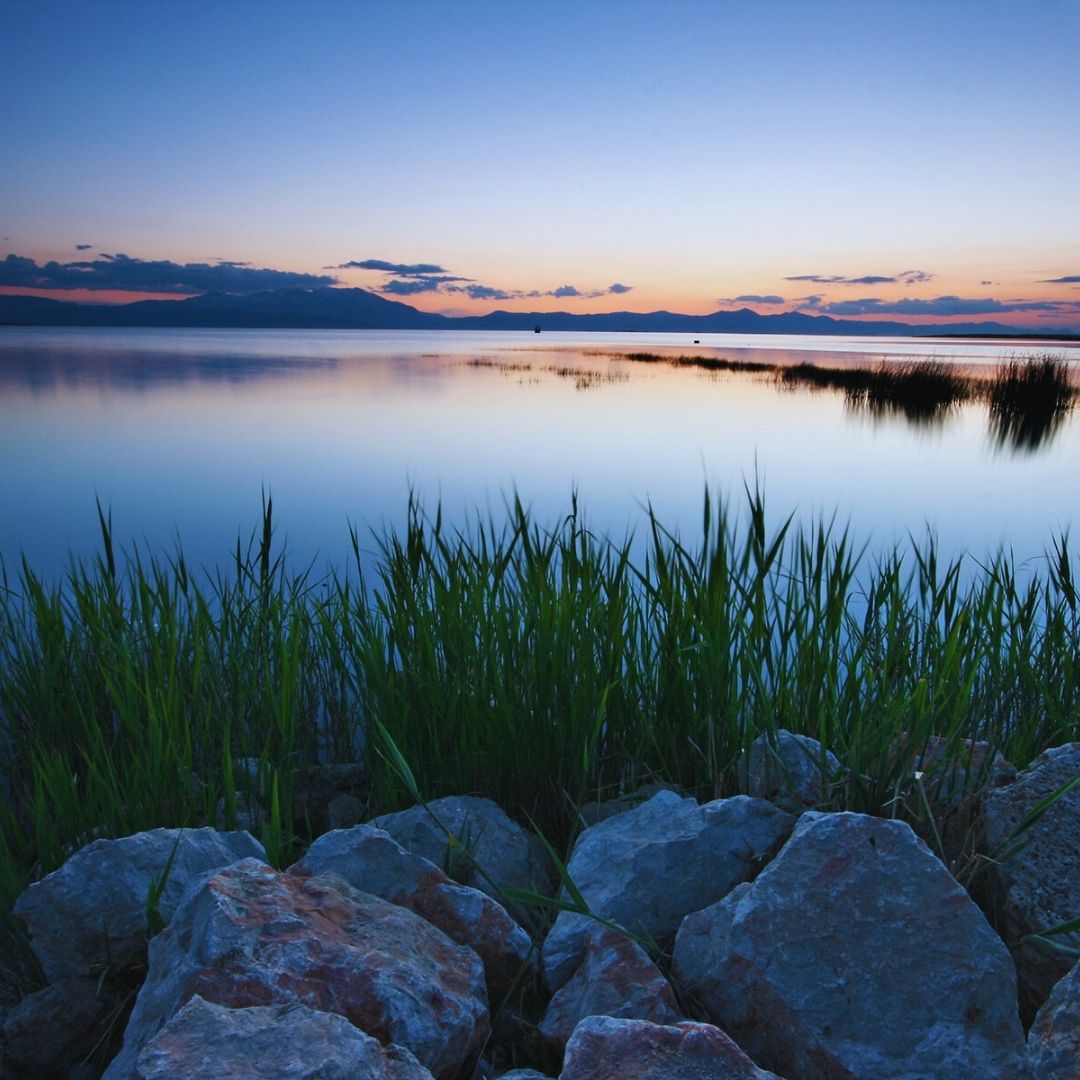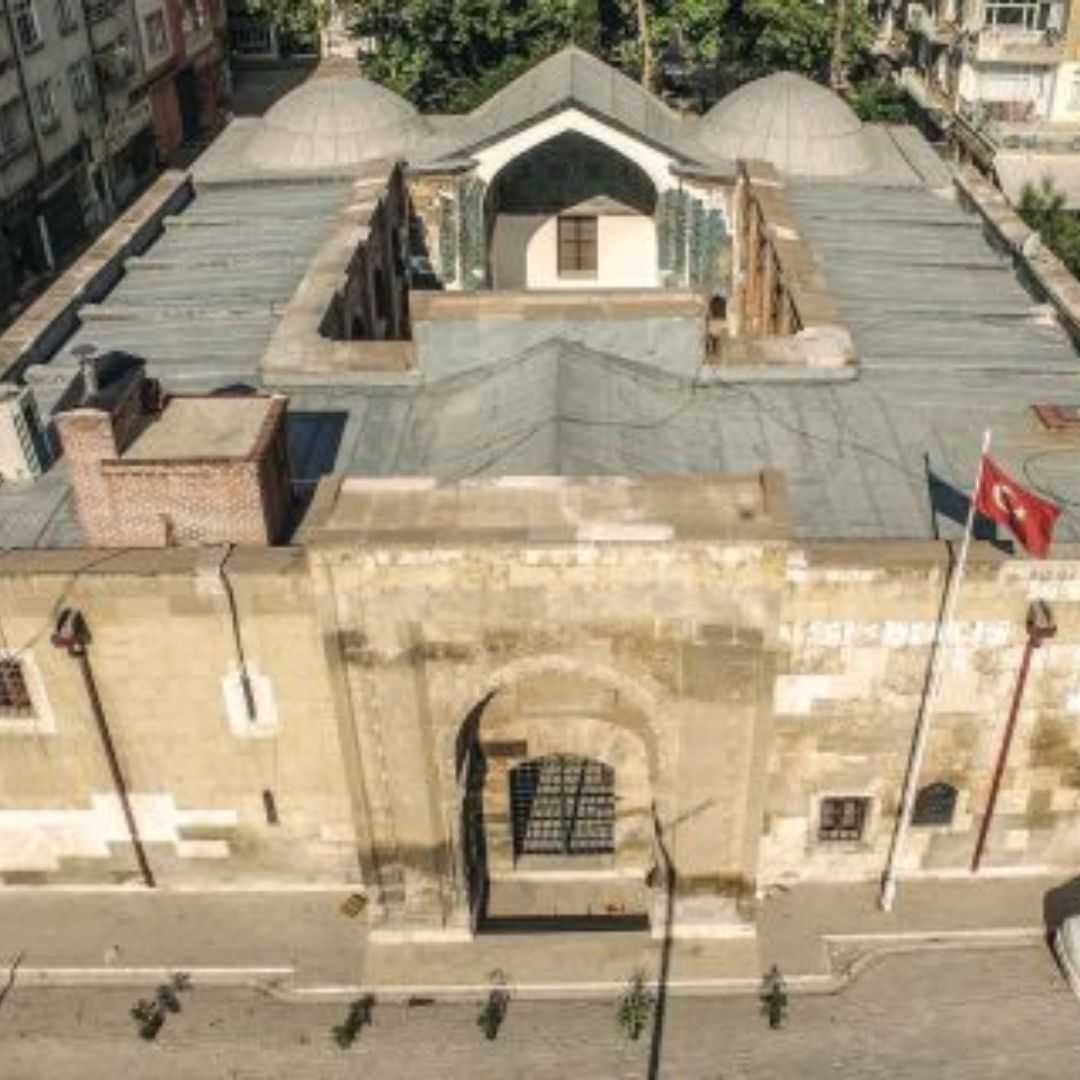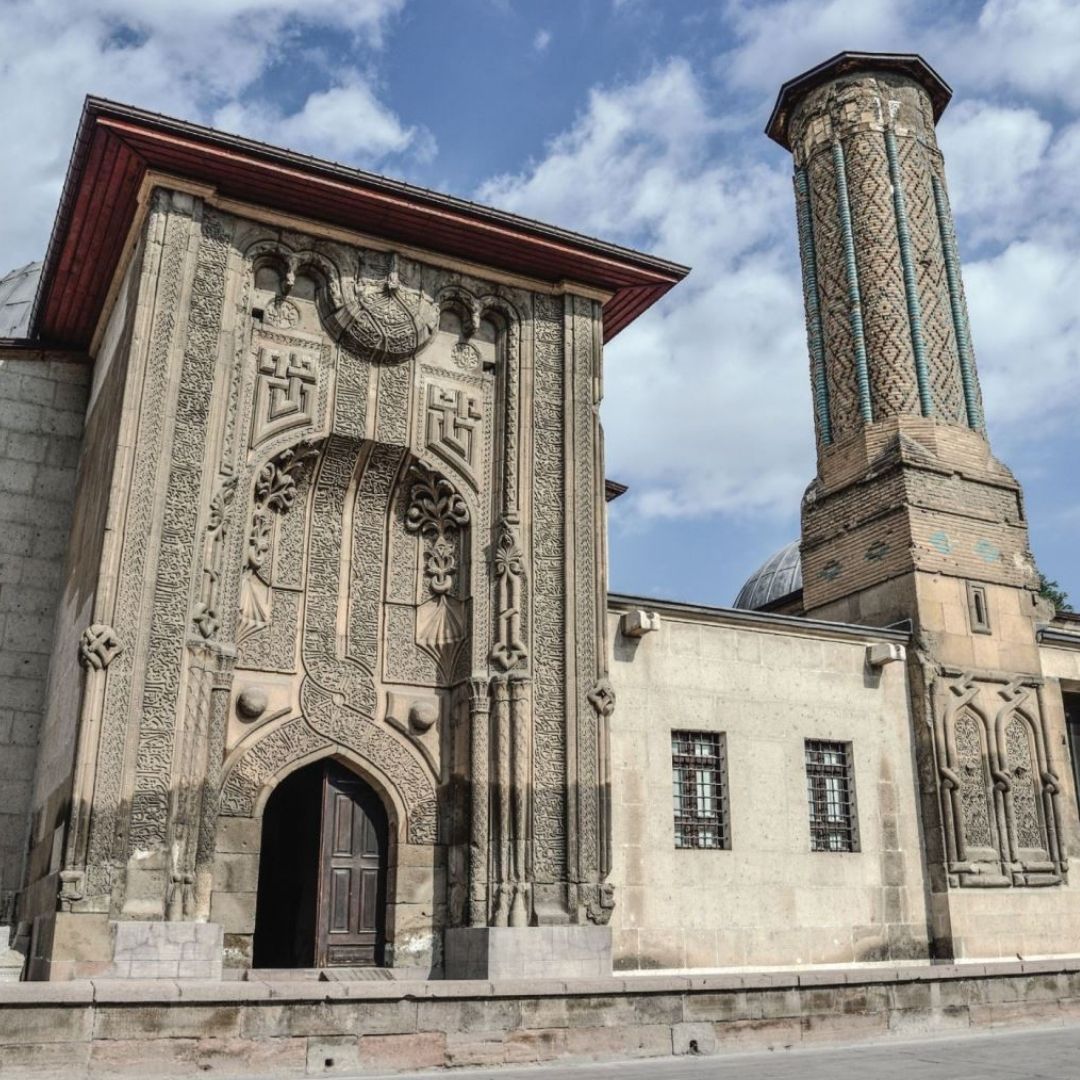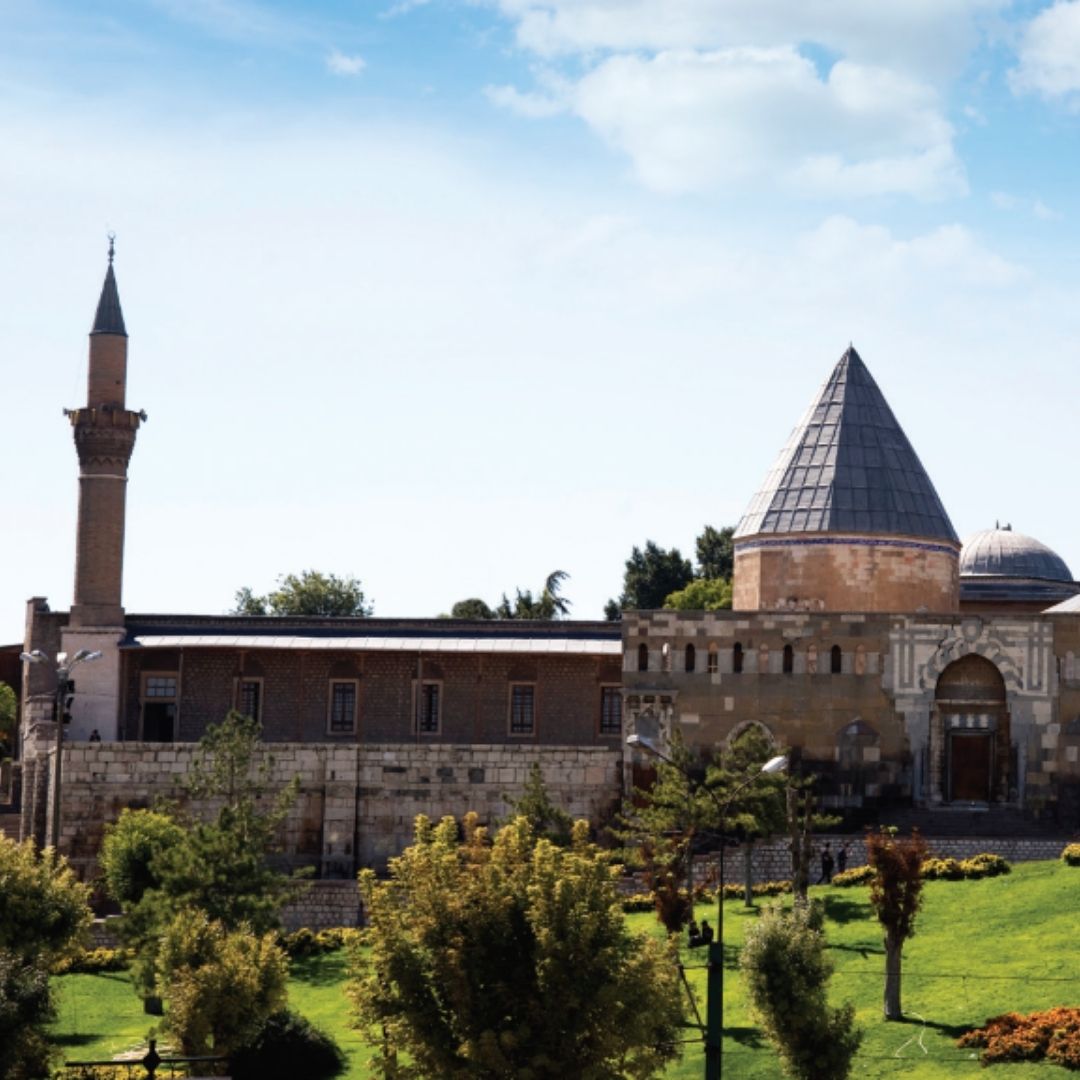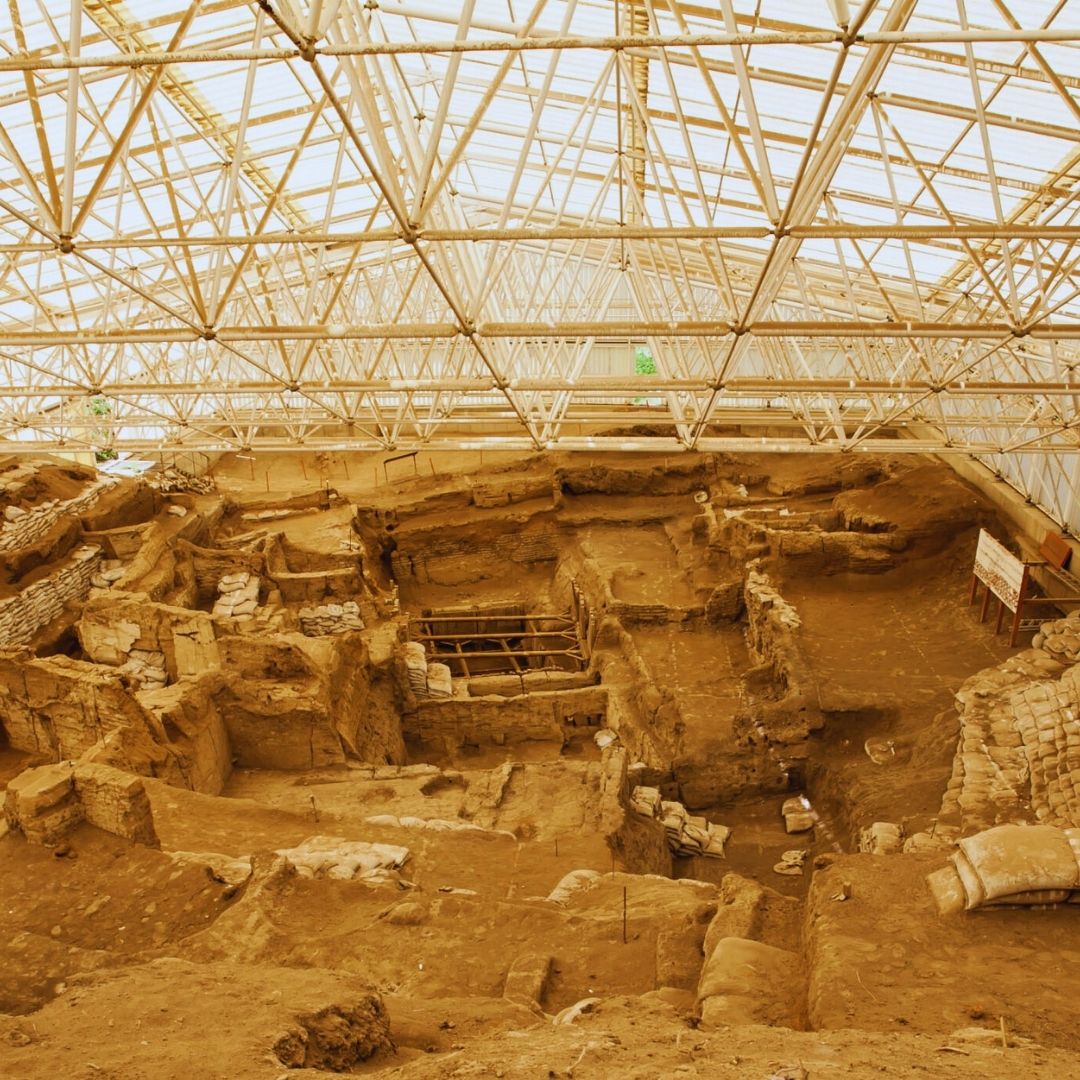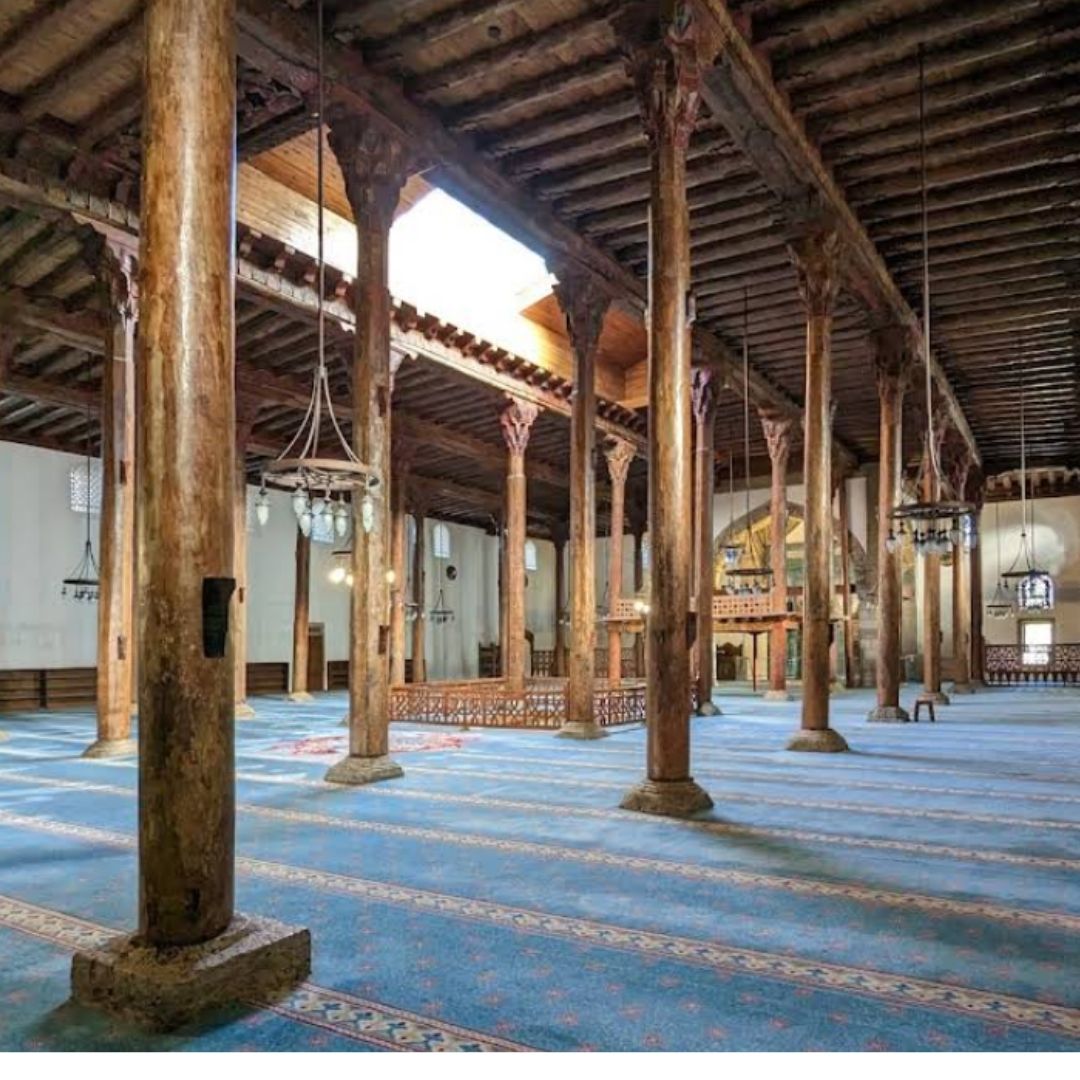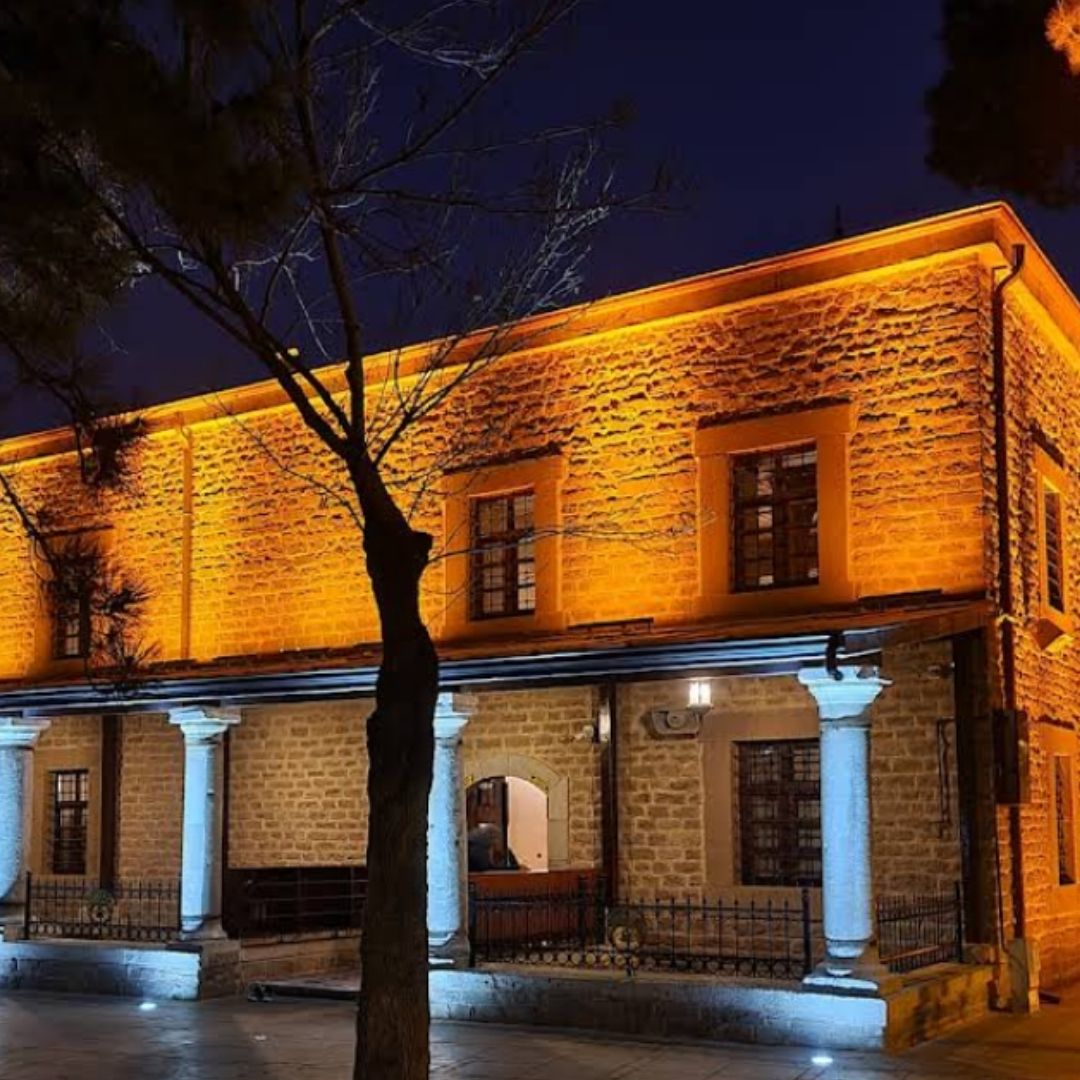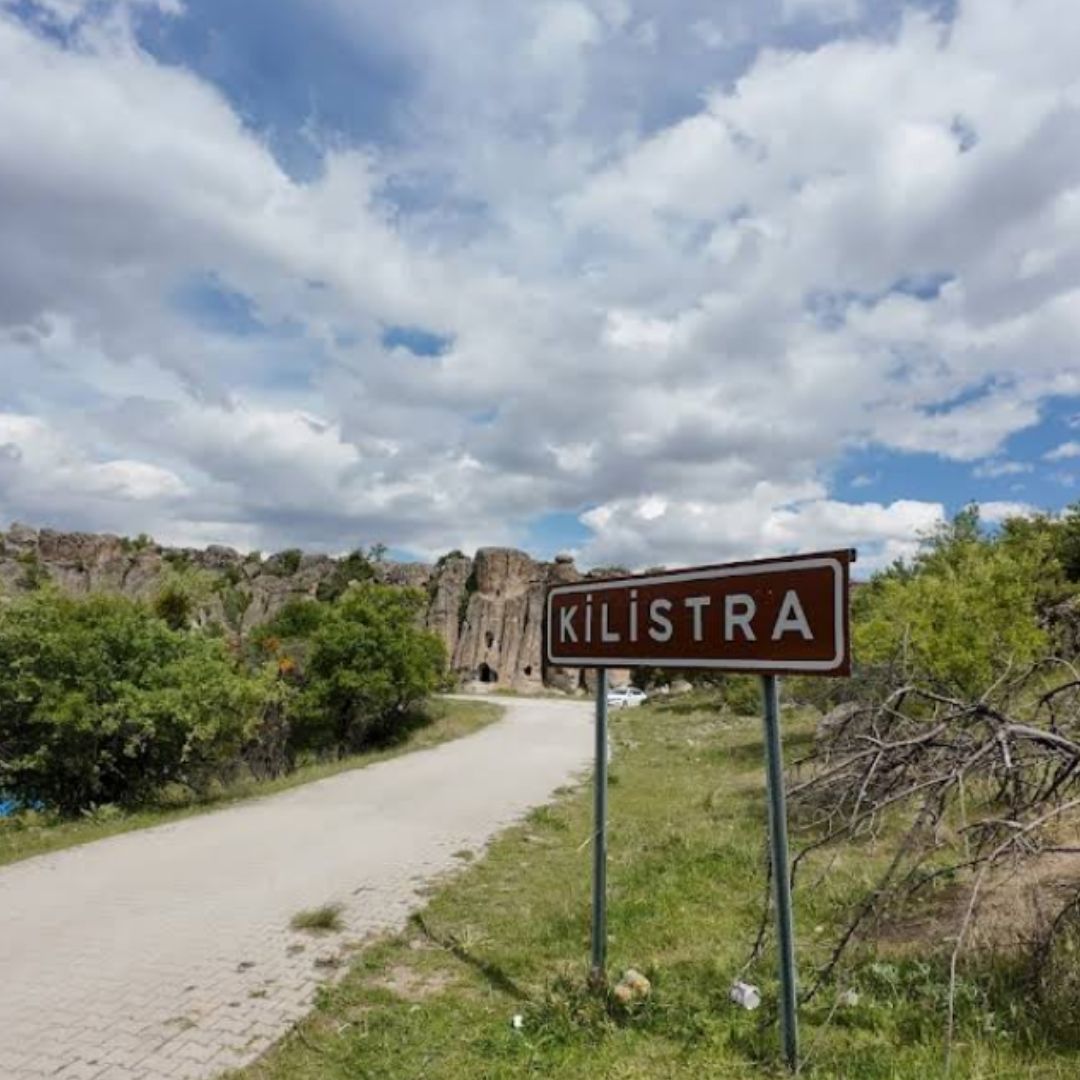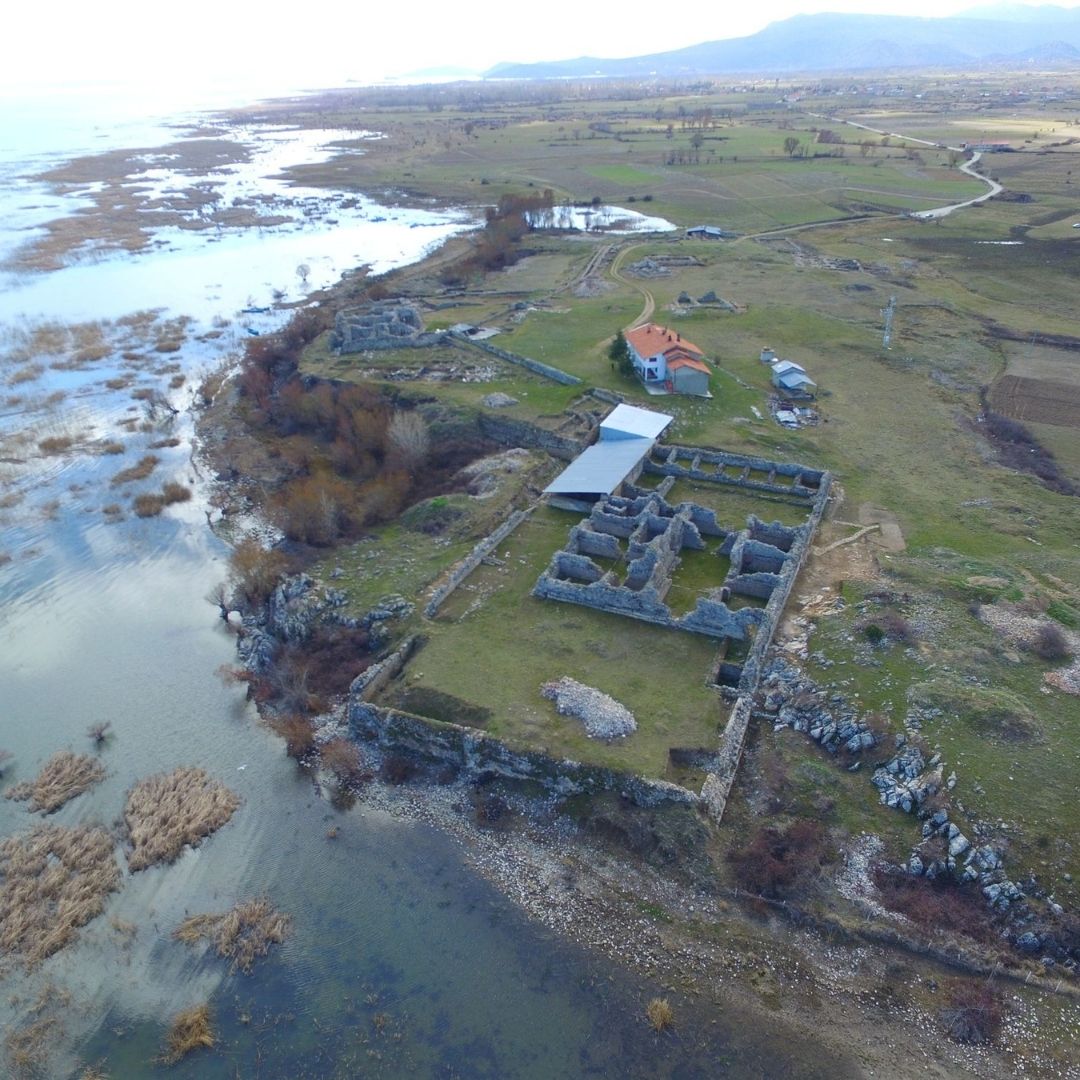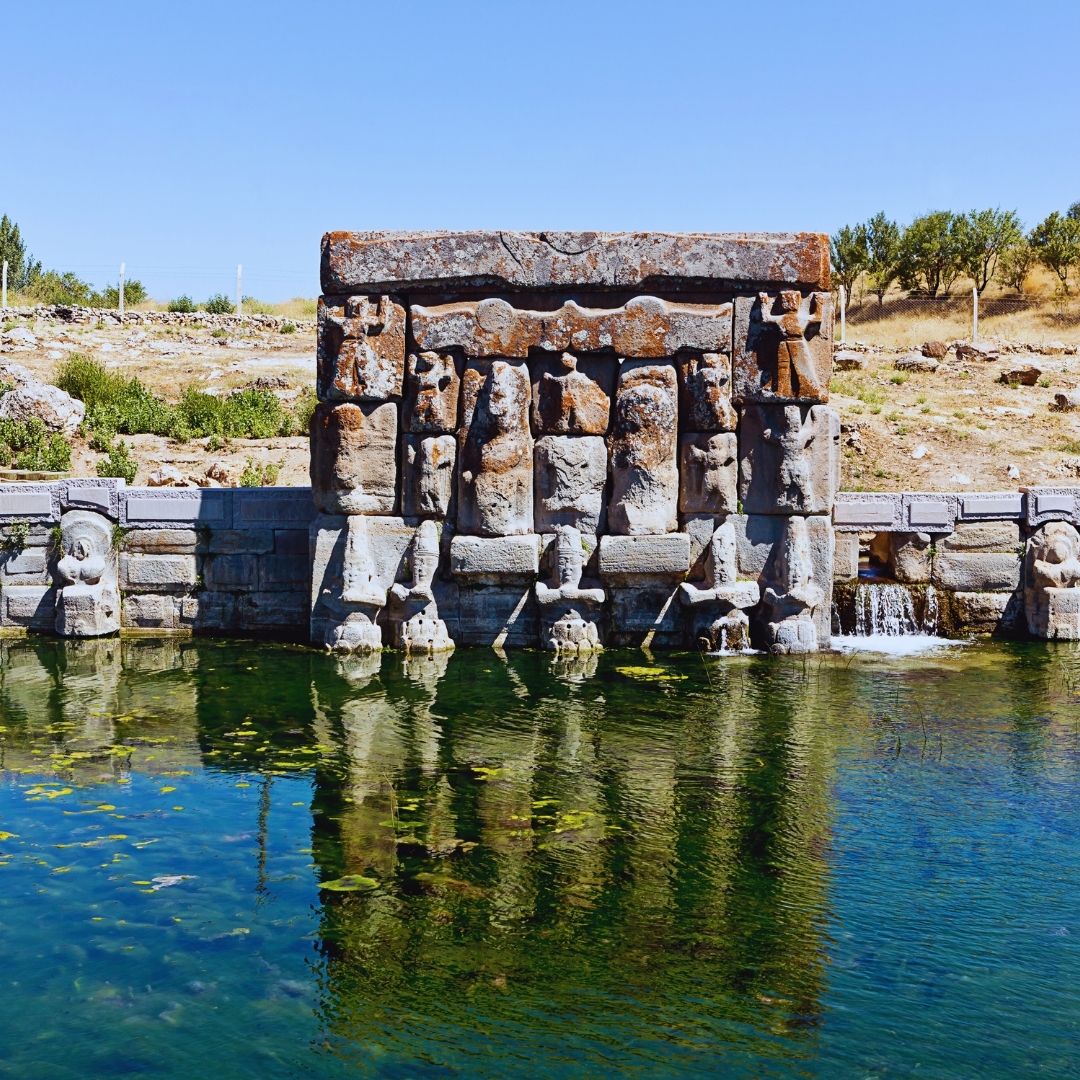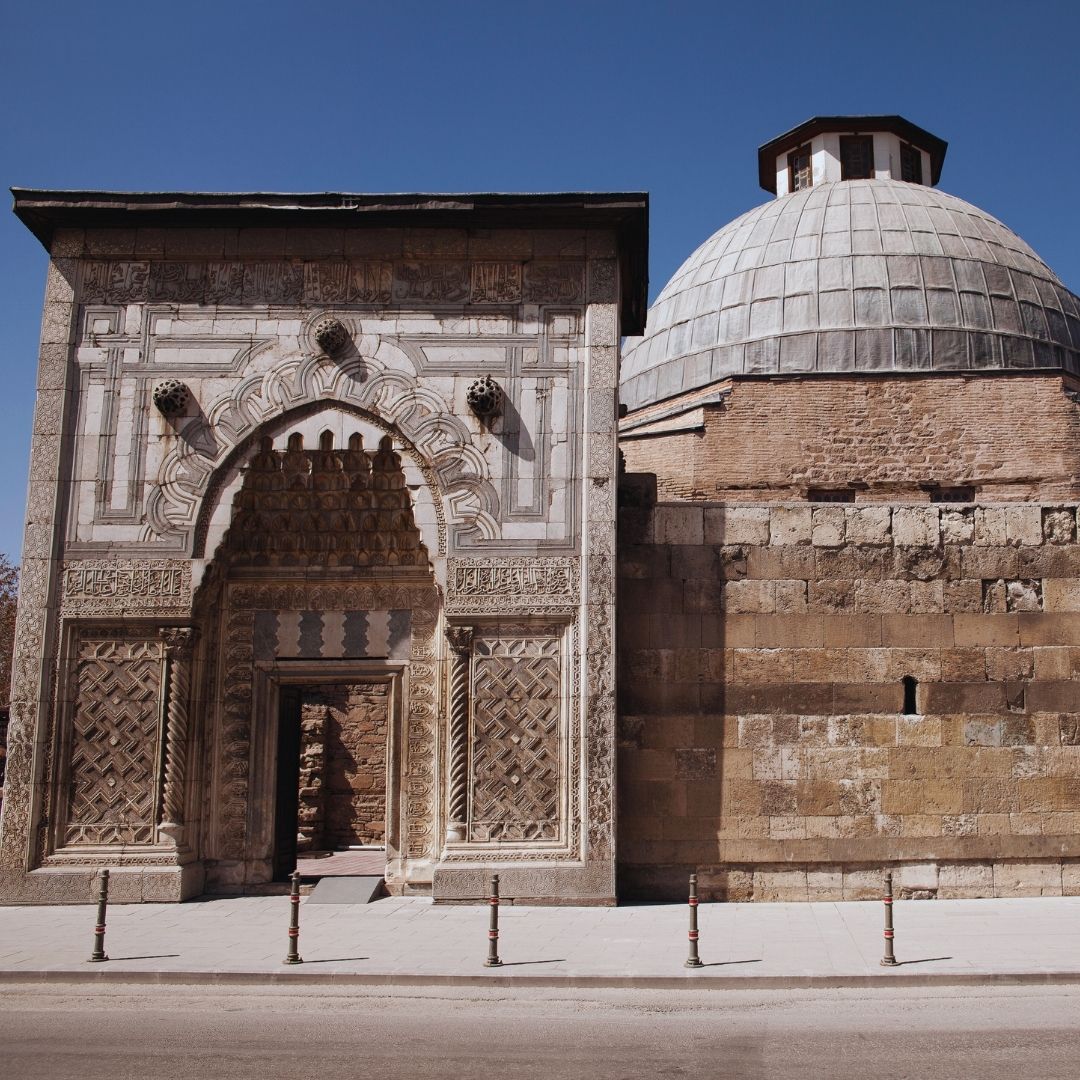Mevlâna Museum
Mevlâna Museum
Travel Point Overview
Located within the Mevlâna Dervish Lodge, the Mevlâna Museum is one of the most significant centers of Sufism and the Mevlevi Order. Originally opened as the "Konya Asâr-ı Atîka Museum" in 1926, it was renamed the "Mevlâna Museum" in 1954, taking its curr
Mevlâna Museum: The Spiritual Heart of Konya
Located within the Mevlâna Dervish Lodge, the Mevlâna Museum is one of the most significant centers of Sufism and the Mevlevi Order. Originally opened as the "Konya Asâr-ı Atîka Museum" in 1926, it was renamed the "Mevlâna Museum" in 1954, taking its current form.
The museum complex was built on the rose garden of the Seljuk palace, which Sultan Alâeddin Keykubad gifted to Mevlâna’s father, Sultanü’l-Ulemâ Bahâeddin Veled. After Sultanü’l-Ulemâ passed away in 1231, he was buried at this site. Later, in 1273, Mevlâna’s son, Sultan Veled, commissioned the construction of a tomb. The mausoleum, known as "Kubbe-i Hadra" (the Green Dome), was built in 1274 by the architect Tebrizli Bedreddin.
Must-See Artifacts in the Mevlâna Museum
The Mevlâna Museum houses many significant artifacts related to the history of Sufism. Visitors enter the courtyard through the "Dervishân Gate." The northern and western sides of the courtyard contain dervish cells, while the southern side has the Hâmûşân Gate. The eastern part includes the main building, where Mevlâna and his family’s tombs are located.
🔹 Mevlâna’s Sarcophagus
The walnut wood sarcophagus of Mevlâna was crafted in 1274 by Konyalı Genakoğlu Hümâmeddin Mehmed and Tebrizli Selimoğlu Architect Abdülvâhid. It is decorated with geometric and floral motifs, along with verses from Mesnevî and Dîvân-ı Kebîr.
🔹 Pûşîde (Mevlâna’s Tomb Covering)
The tomb cover of Mevlâna, known as pûşîde, was commissioned by Sultan Abdulhamid II in 1895. The original 126-year-old covering was restored and preserved in 2021.
🔹 Mesnevî
Written five years after Mevlâna’s passing, the six-volume Mesnevî was completed by calligrapher Mehmed bin Abdullah Konevî in 1278, making it one of the museum’s most valuable manuscripts.
🔹 Nisan Bowl
This bronze bowl, inlaid with gold and silver, was made in 1327 by the Ilkhanid ruler Abu Said Bahadur Khan. Spring rainwater was collected in this bowl and distributed to visitors as a blessing.
🔹 Artifacts from the Mevlevi Tradition
The museum displays oil lamps, musical instruments, calligraphy panels, and manuscripts related to Mevlevi culture. The museum's Specialized Library, founded in 1854 by Sheikh Mehmed Said Hemdem Çelebi, contains over 4,000 handwritten works from the Seljuk, Karamanid, and Ottoman periods.
Mevlâna’s Life and the Mevlevi Order
🔹 Who Was Mevlâna Celâleddîn-i Rûmî?
Mevlâna Celâleddîn-i Rûmî was born on September 30, 1207, in the city of Balkh (now in Afghanistan). His father was Sultanü’l-Ulemâ Bahâeddin Veled, and his mother was Mümine Hatun. Due to the Mongol invasion, his family migrated to Anatolia, eventually settling in Karaman in 1222.
🔹 Mevlâna’s Arrival in Konya
At the invitation of Seljuk Sultan Alâeddin Keykubad, Mevlâna’s family moved to Konya, where he later became a great Sufi scholar. After his father’s passing, he began teaching at the İplikçi Madrasa and gradually became one of the most influential mystics of his time.
🔹 Meeting with Shams-i Tabrizi
One of the most pivotal moments in Mevlâna’s life was his encounter with Shams-i Tabrizi in 1244. This meeting transformed his approach to Sufism and deepened his poetry. His masterpiece, Dîvân-ı Kebîr, reflects his love and devotion to Shams.
🔹 Mevlâna’s Works
📖 Mesnevî – A six-volume work explaining Sufi philosophy in Persian.
📖 Dîvân-ı Kebîr – A major collection of Mevlâna’s poetry.
📖 Fîhi Mâ Fîh – A compilation of Mevlâna’s discourses.
📖 Mecâlis-i Seb’a – A book containing Mevlâna’s sermons.
📖 Mektûbât – A collection of letters written by Mevlâna to various people.
Şeb-i Arûs: The Wedding Night of Mevlâna
Mevlâna regarded death as "union with the divine beloved", referring to his passing as "Şeb-i Arûs" (the Wedding Night). Every year on December 17, Konya hosts commemorative ceremonies for his passing.
During these ceremonies, whirling dervish performances, Sufi music concerts, and conferences are held. The Mevlâna Museum receives its highest number of visitors during this time.
Visiting the Mevlâna Museum: Travel Tips
✅ Visit the Green Dome – Experience the spiritual presence of Mevlâna’s tomb.
✅ Explore the dervish lodges – Learn how Sufi training was conducted.
✅ Admire ancient manuscripts – See one of the oldest copies of the Mesnevî.
✅ Attend the Şeb-i Arûs ceremony – Witness the beauty of Mevlâna’s teachings through the whirling dervishes.
✅ Use the Advisormapp app – Find the museum location and plan your trip efficiently.
Conclusion: Are You Ready to Visit the Mevlâna Museum?
The Mevlâna Museum is not just a museum but a spiritual center that embodies the essence of divine love, tolerance, and Sufism. For those who wish to explore Mevlâna’s teachings, understand his philosophy, and witness the Mevlevi tradition up close, this is a must-visit destination.
🗺 Plan your journey and explore other historical sites in Konya with Advisormapp! 🚀✨

